- Skip to primary navigation
- Skip to main content
- Skip to primary sidebar

- FREE Experiments
- Kitchen Science
- Climate Change
- Egg Experiments
- Fairy Tale Science
- Edible Science
- Human Health
- Inspirational Women
- Forces and Motion
- Science Fair Projects
- STEM Challenges
- Science Sparks Books
- Contact Science Sparks
- Science Resources for Home and School

Easy Density Experiments and Tricks for Kids
May 25, 2022 By Emma Vanstone 11 Comments
Density can be a tricky concept to grasp. Density refers to how much mass there is in a particular space. Imagine a drawer full of socks. It has a specific density. Suppose you take a sock out, the density of the drawer changes. This is because the mass of the socks has changed, but the volume of the drawer has stayed the same.
Generally, the greater the density of an object, the heavier it feels .
Solid substances are denser than their liquid and gas counterparts as the particles in a solid are much more closely packed together.
What is Density?
The density of an object is found by dividing the mass of the object by its volume.
Density Formula
Density = Mass divided by volume
The units used vary depending on the units of mass and volume used for the calculation.
If the mass is measured in kg and volume in cm³, the units for density would be in kg/cm³ .
Something else that can be confusing is mass. People often talk about weight when they mean mass and vice versa.
What is mass?
Mass is a measure of how much matter an object is made up of . The mass of an object remains constant unless you add to or remove part of it.
The weight of an object depends on gravity . Your weight would be less on the moon as there is less gravity, but your mass would stay the same.
You can do lots of very cool demonstrations to demonstrate density in a fun, hands-on way.
Easy Density Demonstrations for Kids
These easy density demonstrations are super simple and brilliant fun ways to show kids ( and grown-ups) this tricky concept in action. There are also a couple of nifty tricks too!
How to make a Density Jar
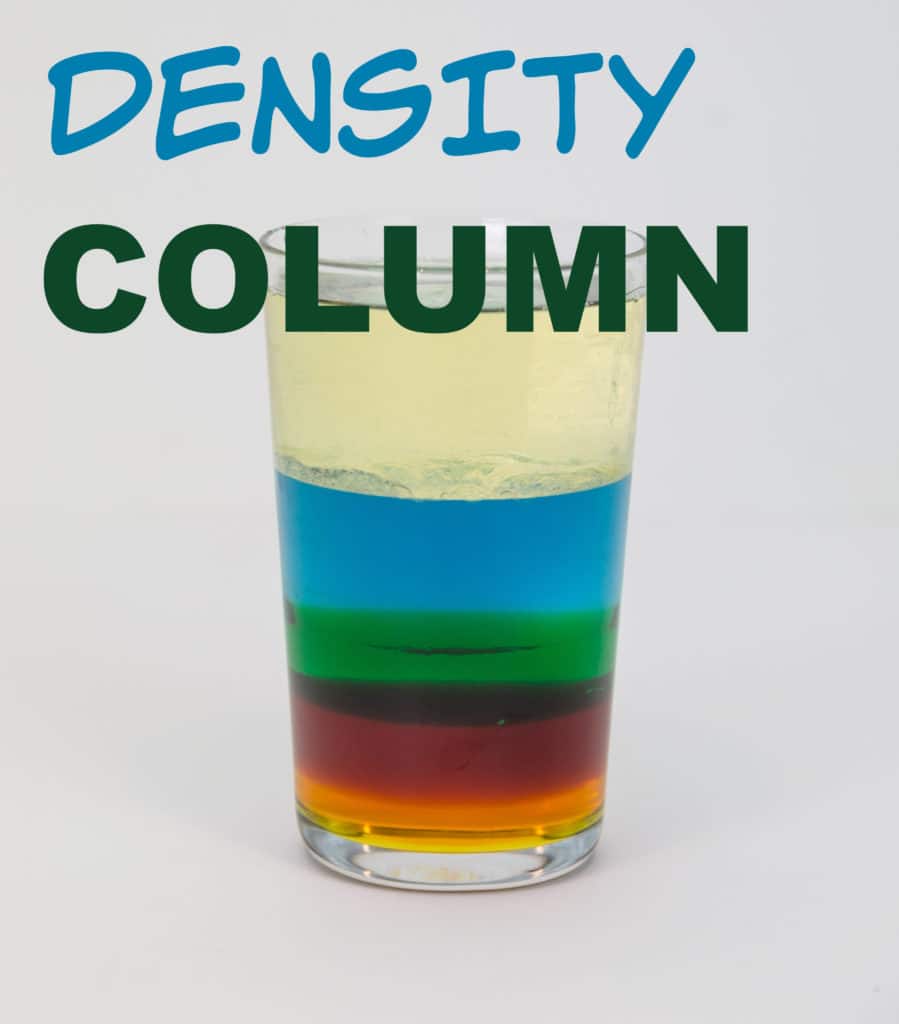
Image taken from This IS Rocket Science
What you need to make a density column
Vegetable or sunflower oil
Food Colouring
Washing up liquid
Golden Syrup
LEGO or other small objects.
How to make a density column
First, make a very simple version using just oil and water.
- Pour some water carefully into a glass or jar.
- Very carefully add about the same volume of cooking oil on top.
- Carefully drop a couple of small objects into the mixture and observe what happens. Can you find an object to float on each layer?
What happens if you shake the jar? You should find that the oil and water mix up and then separate again.
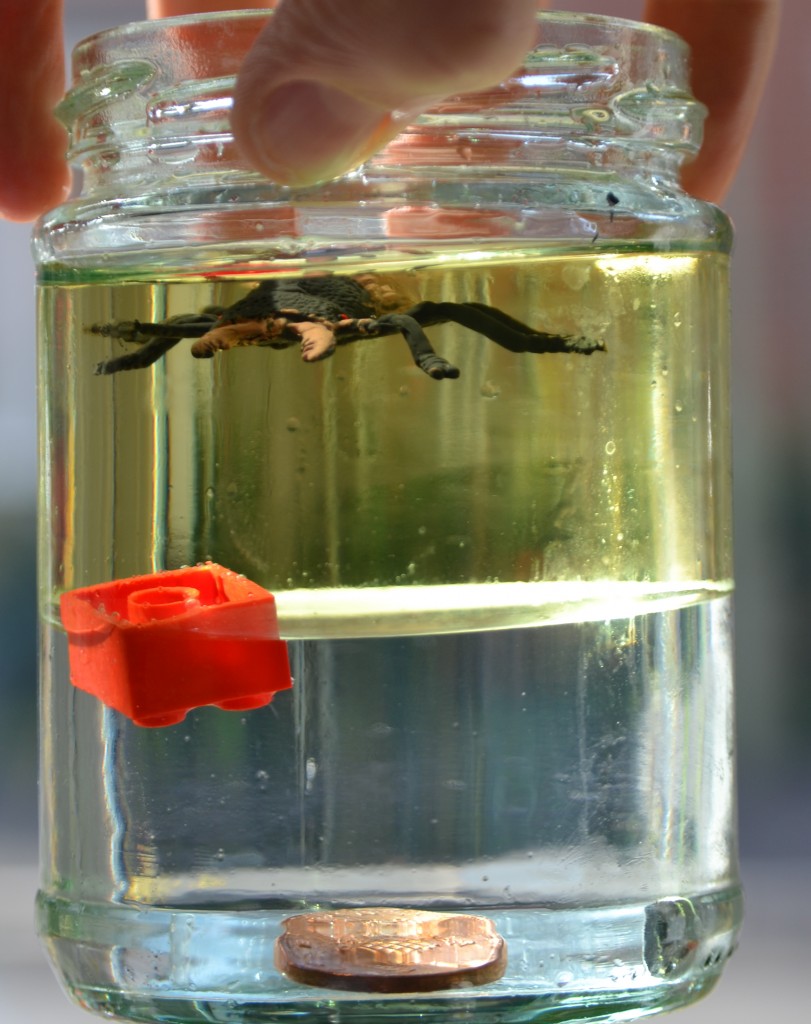
To make a density column with more layers like the one above, you need lots of different liquids of different densities.
We used honey, golden syrup ( or corn syrup ), washing up liquid ( dish soap ), water and food colouring, and vegetable oil, in that order.
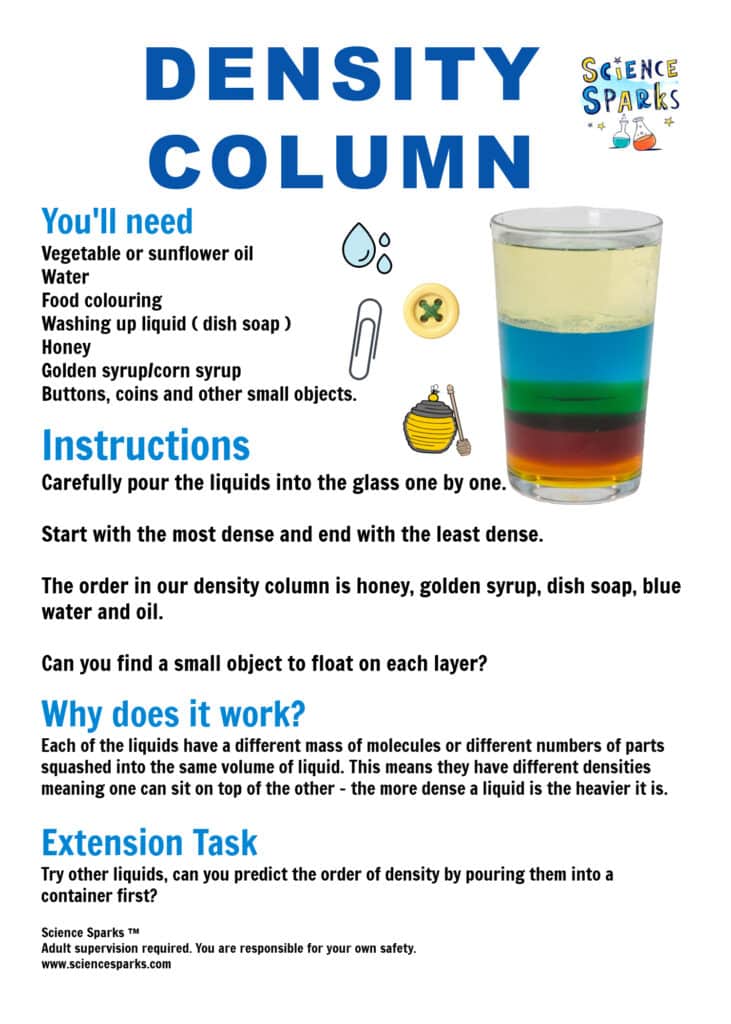
Density of Liquids
Each of the liquids has a different mass of molecules or different numbers of parts squashed into the same volume of liquid; this makes them have different densities. Therefore, one can sit on top of the other – the more dense a liquid is the heavier it is.
Objects and liquids float on liquids of a higher density and sink through liquids of lower density. The LEGO brick falls through the oil but floats on the water, while the coin sinks through both. The coin is therefore more dense than both the oil and the water. The plastic bug floating on the oil is less dense than both.
More Density Experiments
Homemade lava lamp.
Homemade Lava lamps are a fun activity demonstrating that oil and water don’t mix .

Density Trick using Salt and Water
Show your friends a science magic trick and a fantastic density demonstration . This activity uses salt to change the density of one colour of the water.
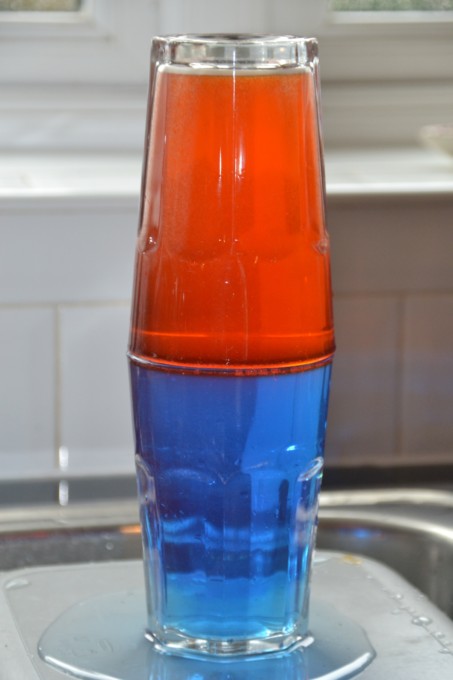
We also have a pirate themed density bottle. Pirate treasure is perfect for hiding in the layers.
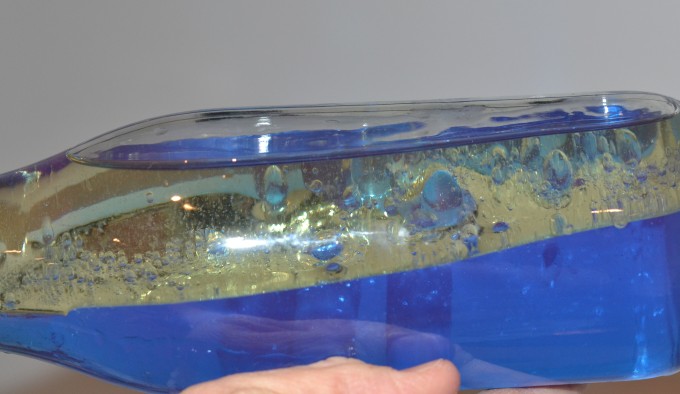
Density and Floating Activities
Did you know that if you reduce the density of an object that sinks in water, it will float? We tried this with a heavy ball and used bubble wrap to make it less dense. The addition of the bubble wrap made the ball float!
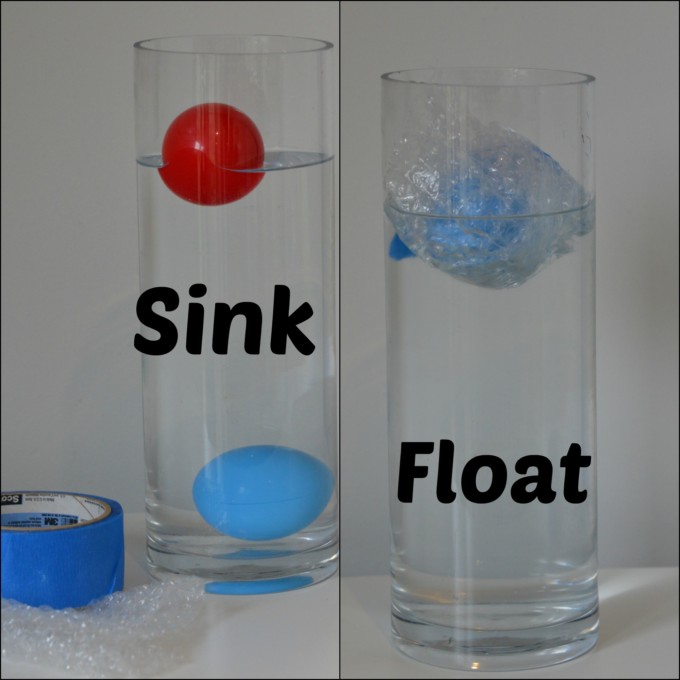
You can also use the same logic to make a lemon sink or an egg float !
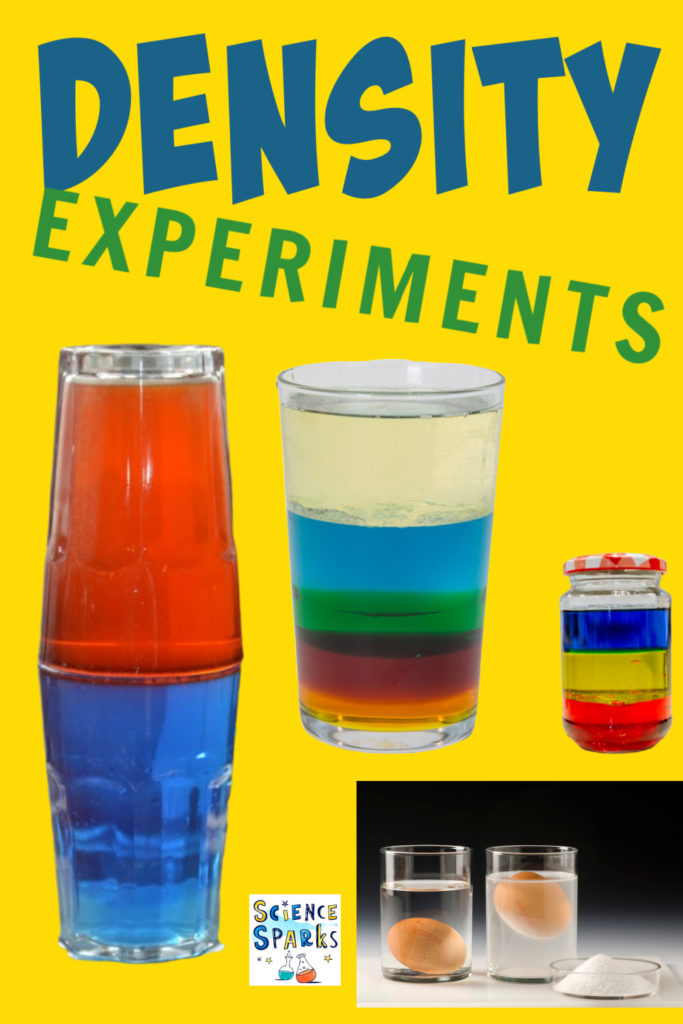
Science Concepts
More awesome science experiments for kids.
Don’t forget we have 100s more fun and exciting science experiments for kid s on Science Sparks.
Some of my favourites are our Fairy Tale Activities , where you can make a raft for the Billy Goats and a Zip Line for Jack and the Beanstalk. The infamous coke and mento explosion is always great fun to watch, and our water science experiments w ill keep you busy for weeks!
Wherever your interests lie, you’re sure to find something you like in our vast collection of science experiments and investigations.
Science Books from Science Sparks
I also have a couple of science books available you might like!
This IS Rocket Science
This Is Rocket Science includes 70 fun experiments for kids (and adults ) showing you how to use everyday items like bottles, cardboard, glue and tape to build excellent rocket ships, paper spinners and mobile rocket launch pads, all while learning about the scientific concepts behind space travel.
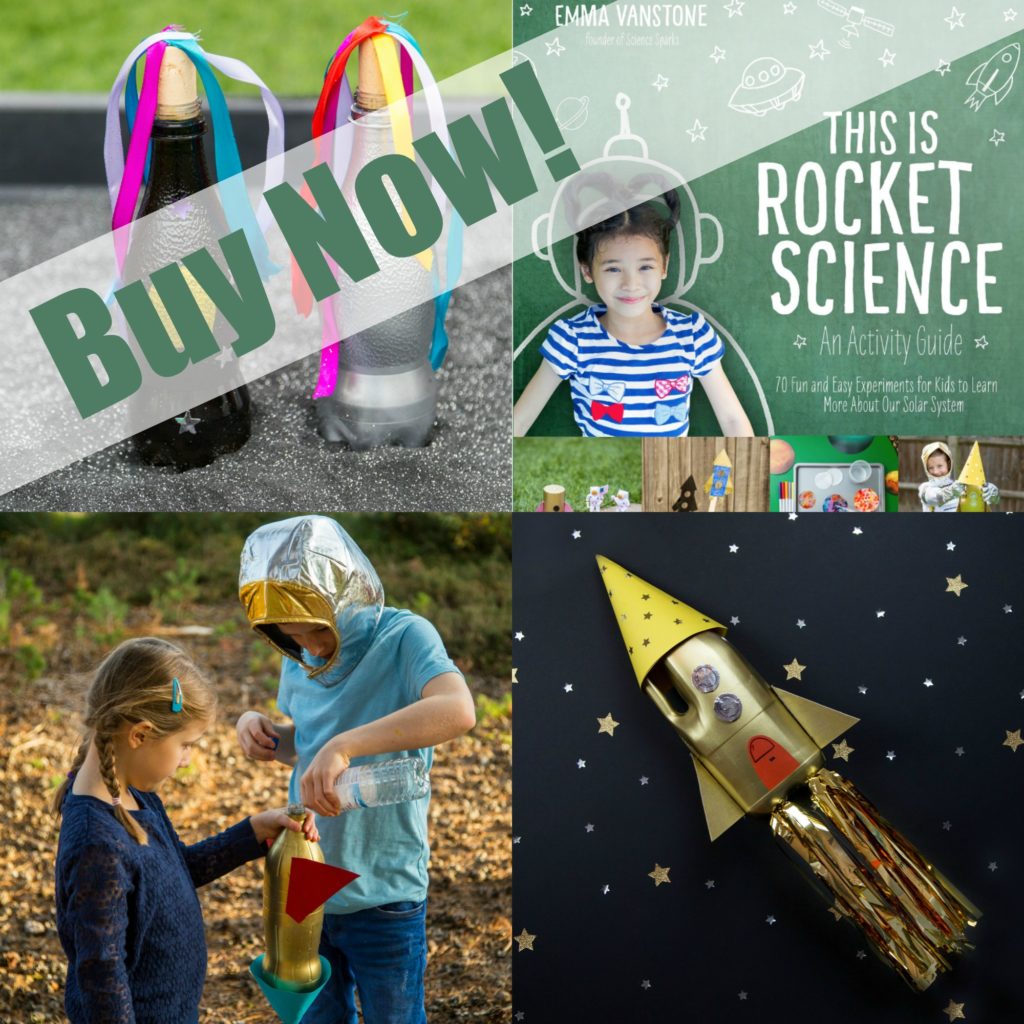
Snackable Science
Snackable Science contains 60 edible experiments allowing kids to investigate their way around the kitchen, making magical mixtures, edible Jenga and Tetris, finding the perfect ketchup, and even creating their own super sour candy powder. It’s colourful, inviting and just brilliant fun.
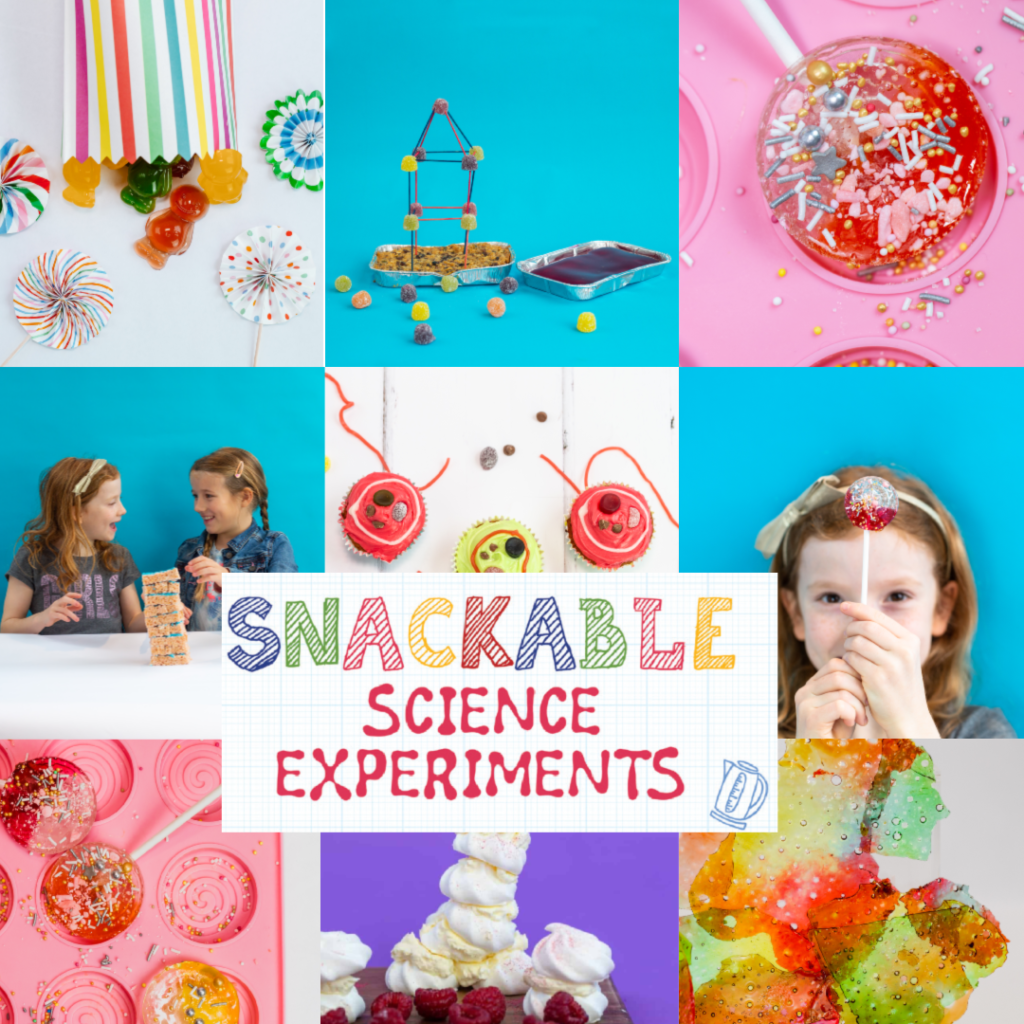
Last Updated on January 29, 2024 by Emma Vanstone
Safety Notice
Science Sparks ( Wild Sparks Enterprises Ltd ) are not liable for the actions of activity of any person who uses the information in this resource or in any of the suggested further resources. Science Sparks assume no liability with regard to injuries or damage to property that may occur as a result of using the information and carrying out the practical activities contained in this resource or in any of the suggested further resources.
These activities are designed to be carried out by children working with a parent, guardian or other appropriate adult. The adult involved is fully responsible for ensuring that the activities are carried out safely.
Reader Interactions
September 07, 2012 at 7:38 pm
Oooooh! So that was it! *hunts for rainbow glass tutorial!*
September 08, 2012 at 12:05 am
Fun! We need to do this – I think my kids would love it!
September 08, 2012 at 1:38 am
Fabulous. I love the easy way you’ve explained it. Pinning to my science board 🙂
September 09, 2012 at 7:29 pm
Thank you. x
September 08, 2012 at 3:00 pm
I have treasures that would be great for this lesson.
September 09, 2012 at 7:28 pm
do let us know if you do it. x
September 09, 2012 at 8:25 am
Fantastic. Such a fascinating science experiment for kids!!! Love it.
September 10, 2012 at 6:29 pm
PS thanks for sharing on Kids Get Crafty!
September 14, 2012 at 10:26 pm
So cool!! I love it. Thank you for sharing on Sharing Saturday!!
April 21, 2013 at 8:55 pm
Another great demo for teaching density would be with pop. What you need is a fish tank full of water, a diet coke, and a regular coke. When you put the two cans in the water, the diet coke will float and the regular coke will sink. Explain to the kids that since the diet coke does not have as much mass, it is less dense so it floats.
August 03, 2021 at 7:58 am
Experiments like these are prefect for making learning fun for kids. It can spark their enthusiasm towards science. Thanks for sharing this idea!
Leave a Reply Cancel reply
Your email address will not be published. Required fields are marked *

Top 20 Density Science Experiments
Welcome to our compilation of the top 20 density-related science experiments, specially curated for teachers and students.
Density, a fundamental concept in physics and chemistry, unveils the mysteries of why some objects float while others sink, and why certain liquids form layers instead of mixing.
These hands-on, enlightening experiments, suitable for learners across different age groups, promise to not only solidify your understanding of density but also kindle a burning passion for the intricacies of the physical world.
So, let’s plunge into the world of density-based science experiments!
1. Sink or Float?
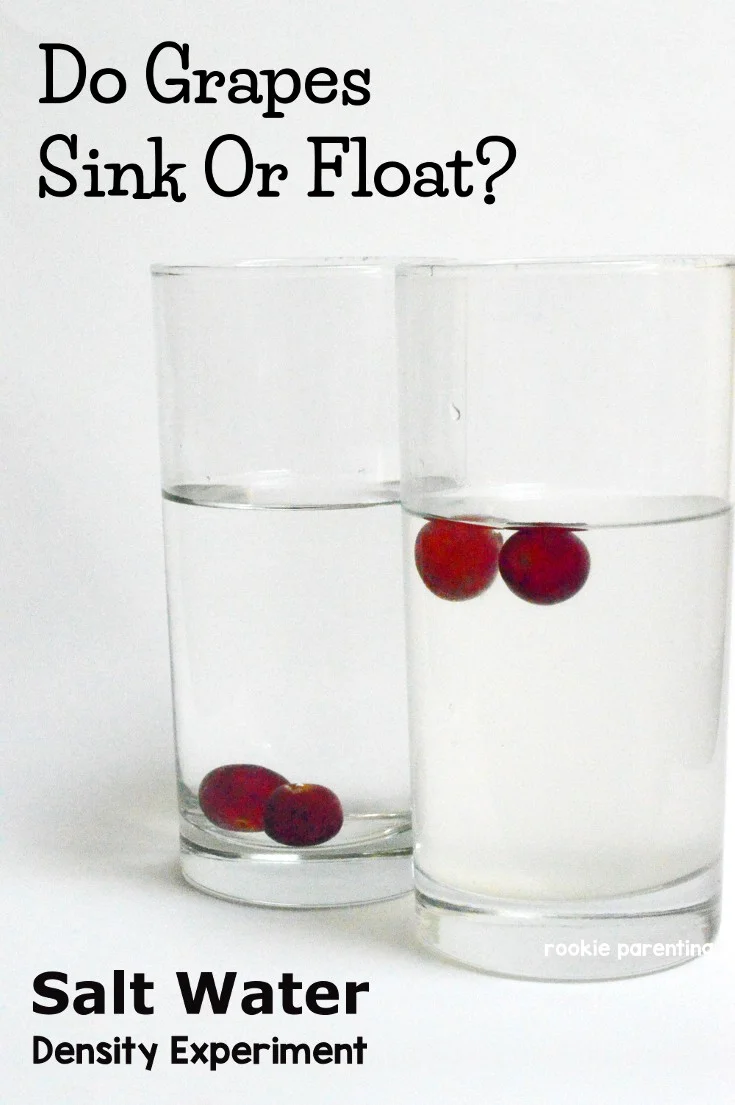
In this experiment, students will explore the concept of density by investigating whether grapes, when placed in different concentrations of salt sh the power of centrwater, will float or sink.
Learn more: Salt and Water Density Experiment
2. Why Salt Water and Fresh Water Don’t Mix
By carefully pouring freshwater into a container of saltwater, students can observe the formation of distinct layers instead of immediate mixing.
3. Seven-Layer Density Column Experiment
Explore the fascinating world of density with the captivating “Seven-Layer Density Column Experiment.”
In this experiment, students will have the opportunity to create a mesmerizing column of liquids, each layer resting on top of the other based on its density.
4. Ocean Zone Jar
This captivating activity allows students to create a visually stunning representation of the ocean’s different zones.
5. Salt Volcano
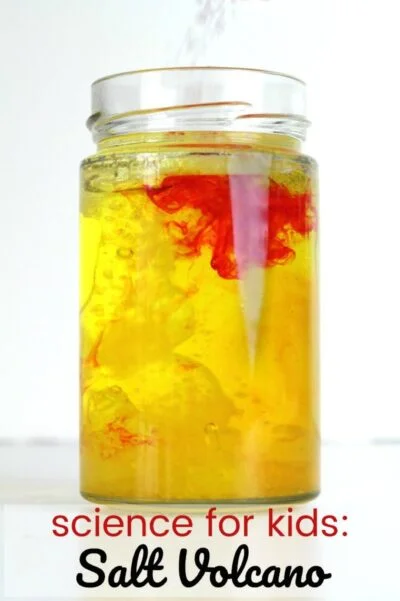
Ignite your curiosity and unleash your inner scientist with the thrilling “Salt Volcano” experiment. In this exciting activity, students will create a volcanic eruption using just a few simple ingredients.
Learn more: Salt Volcano
6. Sugar Density Experiment
Indulge in the sweet world of science with the intriguing “Sugar Density Experiment.” In this experiment, students will explore the concept of density using various concentrations of sugar solutions.
7. Ocean Science
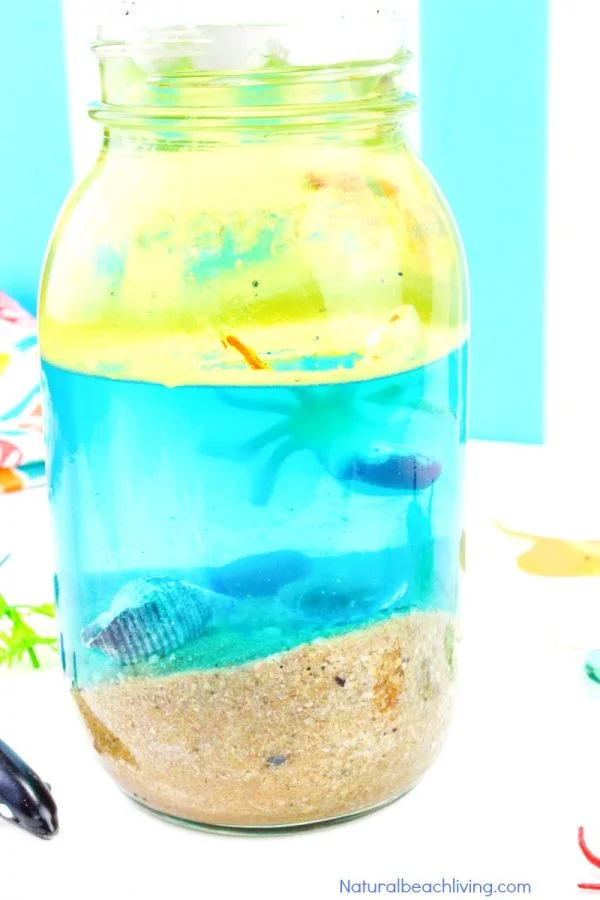
Dive into the fascinating world of ocean science with captivating activities specially designed for kids. From marine life to ocean currents, there’s a wealth of knowledge waiting to be discovered.
Learn more: Ocean Science for Kids
8. Underwater Color Explosions
Immerse yourself in a captivating underwater world with the mesmerizing “Underwater Color Explosions” experiment. In this visually stunning activity, students will explore the principles of density and chemical reactions by creating vibrant bursts of color in water.
9. Cork Sailboat
Set sail on a thrilling adventure with the “DIY Toy Sailboat” project. In this exciting hands-on activity, students can unleash their creativity and engineering skills by building their own toy sailboat.
10. Make a Water Strider
Experience the wonders of surface tension with the fascinating “DIY Water Strider” project. In this engaging activity, students can create their own water strider, a fascinating insect that glides effortlessly across the surface of water.
11. Build a Bottle Centrifuge
Unleash the power of the centrifugal force with the thrilling “Build a Bottle Centrifuge” project. In this hands-on experiment, students can create their very own centrifuge using simple materials found around the house.
12. Aluminum Foil Boat
Get ready to set sail on a buoyant adventure with the “Aluminum Foil Boat” project. In this captivating hands-on experiment, students can construct their own boat using just a sheet of aluminum foil.
13. Waves in Slow Motion
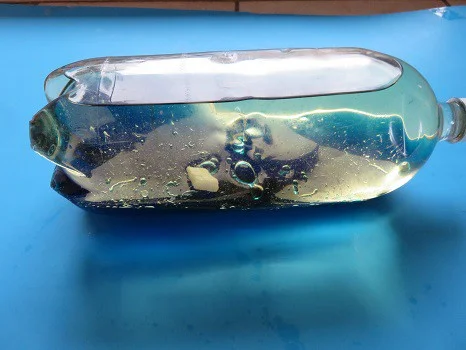
Experience the mesmerizing beauty of waves in slow motion with this captivating science experiment. By trying this experiment, students can observe and study the intricate movements of waves in a relaxed and detailed manner.
Learn more: Waves in Slow Motion
14. Lava Lamp
Ignite your creativity with the captivating “DIY Lava Lamp” experiment. In this mesmerizing activity, students can create their own mini lava lamp using simple household materials.
15. Floating and Sinking Soda Pop Cans
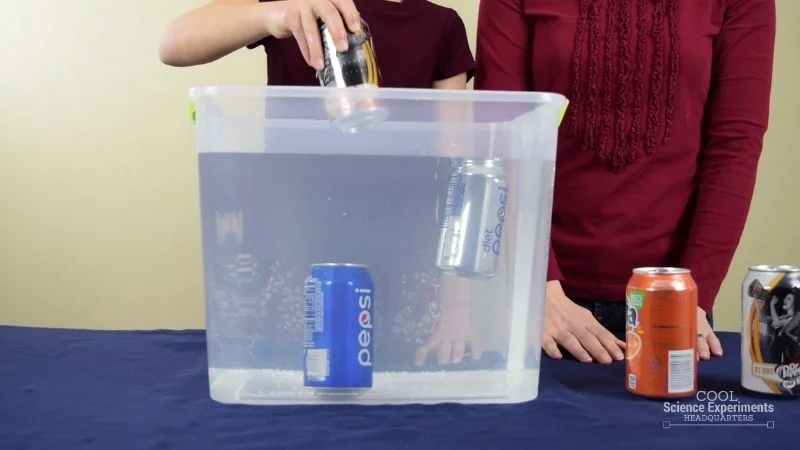
Dive into the intriguing world of buoyancy with the “Floating and Sinking Soda Pop Cans” experiment. In this exciting hands-on activity, students will explore the concept of density by investigating why some soda cans float while others sink in water.
Learn more: Floating and Sinking Soda Pop Cans
16. Burning Candle Density Experiment
Uncover the fascinating relationship between density and combustion with the “Burning Candle Density Experiment.” In this captivating science exploration, students can witness the impact of heat and combustion on the density of air.
17. Density Sensory Bottles
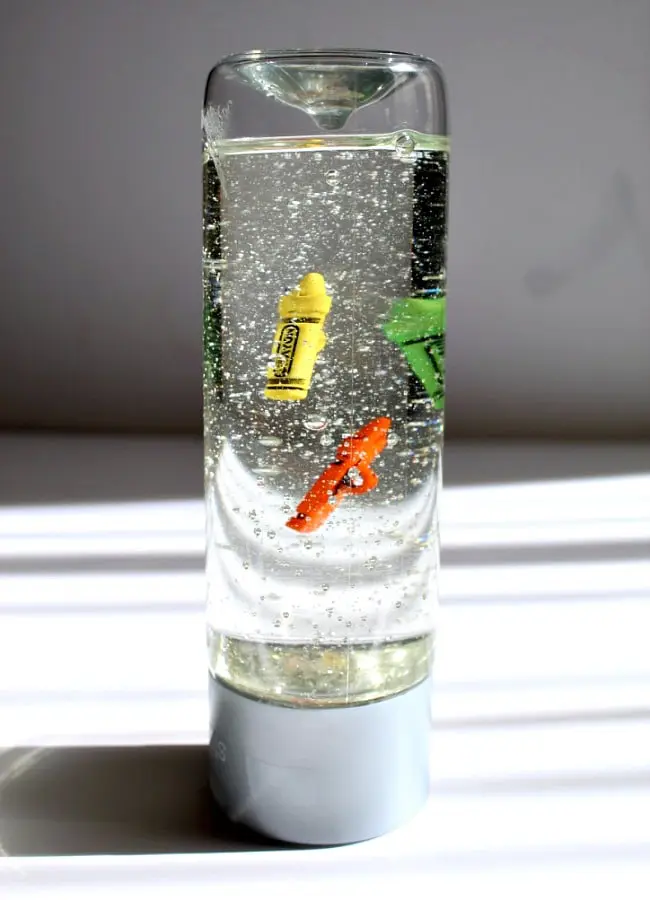
Engage your senses and explore the concept of density with the captivating “Density Sensory Bottles” experiment. This hands-on activity allows students to create their own sensory bottles filled with materials of different densities.
Learn more: Density Sensory Bottles
18. Floating Egg Science
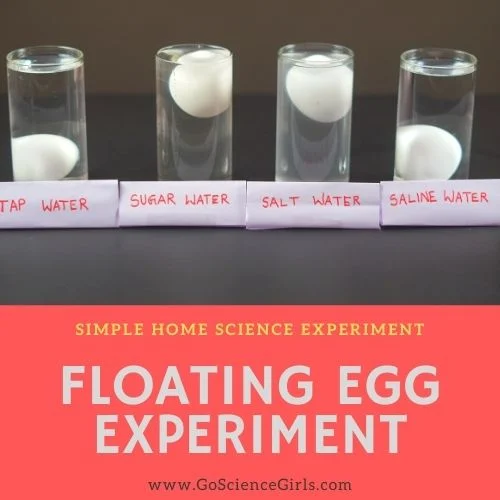
Discover the wonders of buoyancy and density with the captivating “Floating Egg Science” experiment. This hands-on activity allows students to explore the principles of density and observe how it affects the floating or sinking of an egg in different liquids.
Learn more: Floating Egg Science
19. Raincloud in a Jar
Unlock the mysteries of density and cloud formation with the captivating “Rain Cloud in a Jar.” This experiment not only introduces the concept of density but also provides a practical demonstration of how clouds are formed in the atmosphere.
20. Exploring Density Marble Race
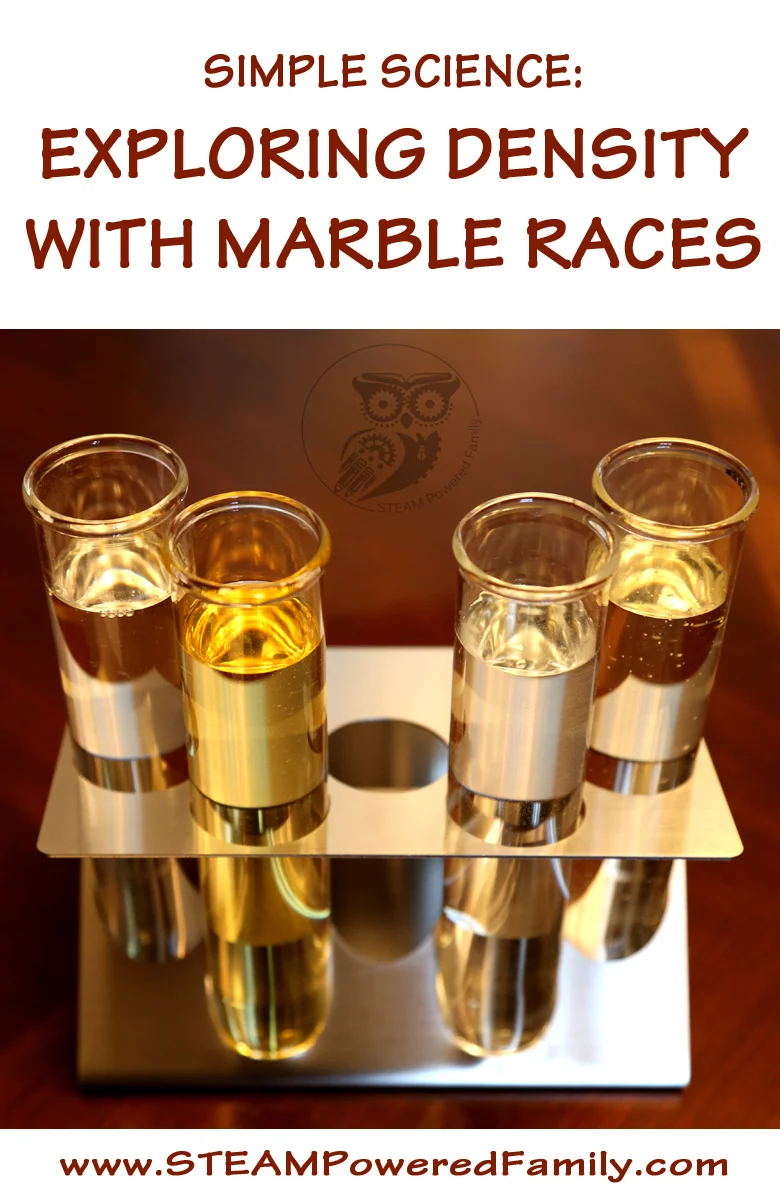
Embark on an exciting adventure of speed, motion, and density with the thrilling “Exploring Density Marble Race” experiment.
Learn more: Exploring Density Marble Race
Similar Posts:
- 68 Best Chemistry Experiments: Learn About Chemical Reactions
- Top 100 Fine Motor Skills Activities for Toddlers and Preschoolers
- Top 58 Creative Art Activities for Kids and Preschoolers
Leave a Comment Cancel reply
Save my name and email in this browser for the next time I comment.

Lab Ideas for Teaching Density
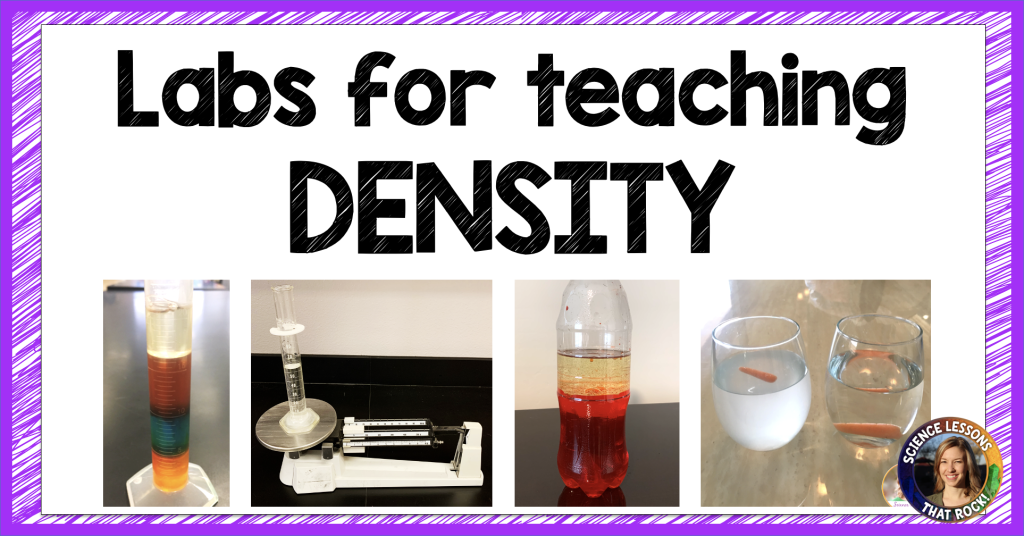
Why density is so important
Density is a fun topic to teach because it is so hands-on. There are a ton of experiments you can do to help students understand the concept. It’s an important concept for students to understand across all the branches of science: Black holes. Layers of the earth and plate tectonics. Oil spills. Ocean currents. It all comes back to density!
Labs to do BEFORE teaching density
The goal in the beginning is to show students some phenomena relating to density, and have them figure out what is going on. Here are some great options you can begin with:
Dancing spaghetti: Get a beaker of sprite and add some pasta (or raisins work great too!) As the carbonation sticks to the pasta, it makes the pieces less dense and they float. When the bubbles pop, they sink again!
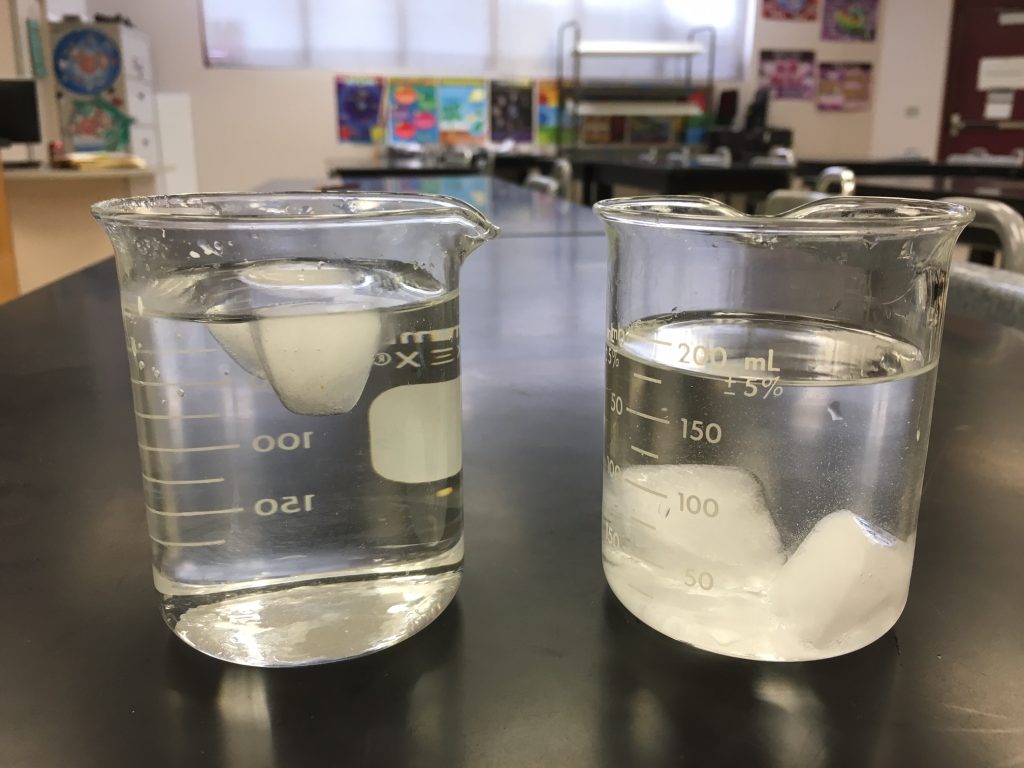
For this easy demo, all you need is a beaker of water, a beaker of rubbing alcohol, and some ice cubes. Start by placing the beaker of alcohol up front, and dropping in the cubes. Yell, “WHAT HAPPENED TO THE SCHOOL WATER?!” and get students drawn in. Why do the ice cubes sink? Have students brainstorm before pulling out the beaker of freshwater.
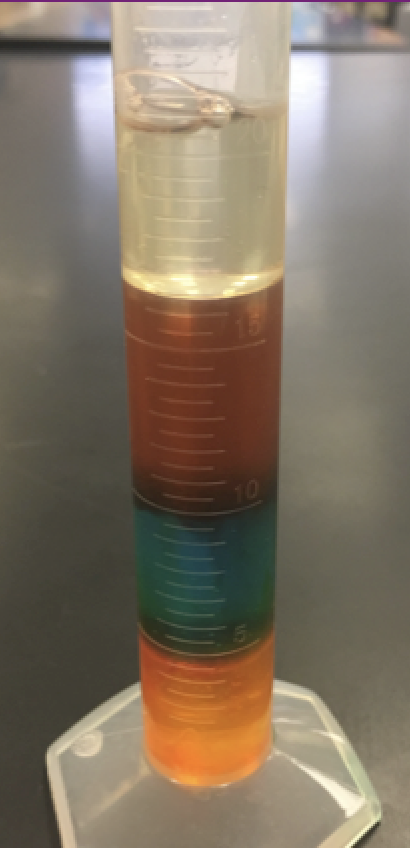
Density towers are super fun to make, but can be a pain to clean up after (sticky karo syrup at the bottom does not always play nice). For that reason I prefer building a density column as a demo instead of a class lab. But, you do what works for you! Tip: If you want students to build their own, using small test tubes uses less material than large graduated cylinders.
Sinking Soda: If you are a soda drinker like me, you probably have some soda cans laying around. Place a can of regular soda and diet soda in a large tank of water. Why does the regular soda sink, while the diet floats? You could also collect some other tricky objects and have students predict if they will sink or float before adding them to the tank.
Labs to do AFTER teaching density
Now that students know what density is, lets look at how to calculate it. Its also good to reinforce density with some more real-world application.
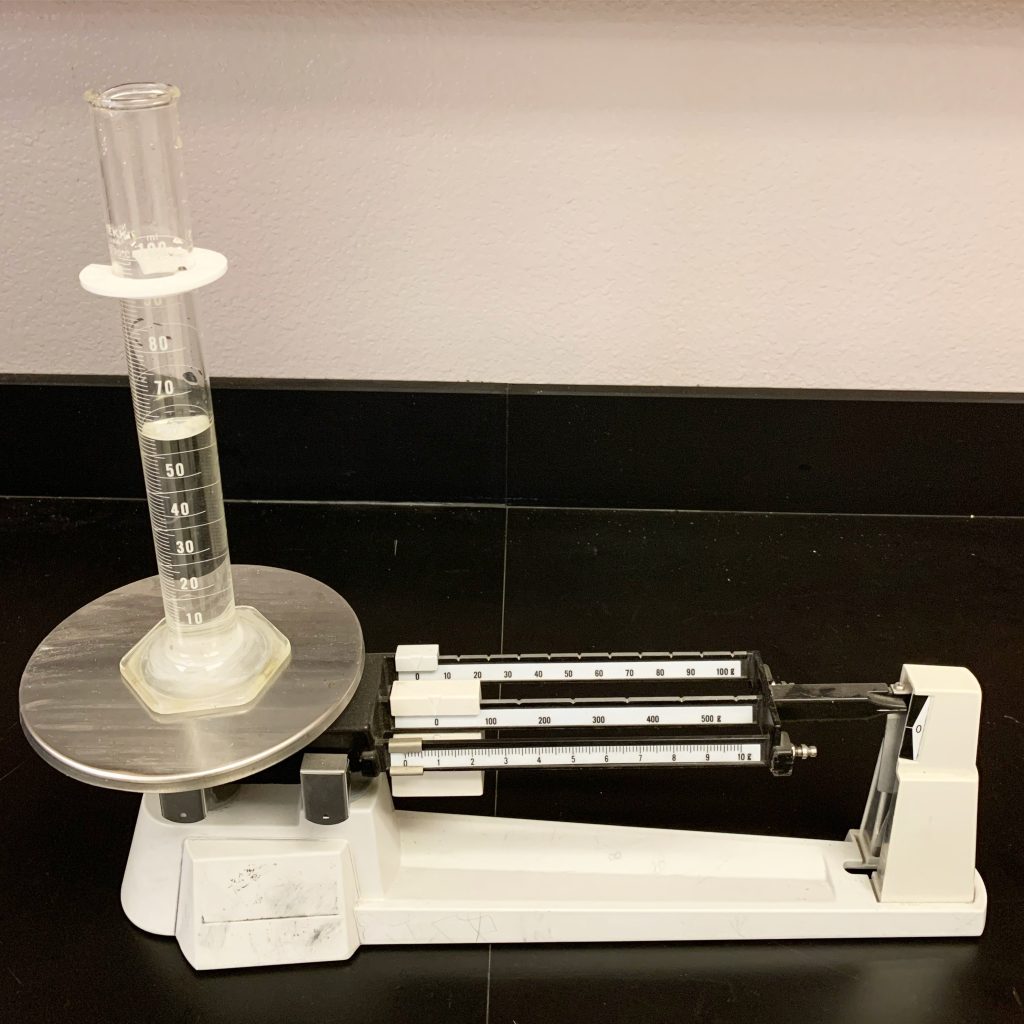
What is the density of water? In this easy lab, students will learn that the density of water is always 1 g/mL. All they have to do is continue filling up a graduated cylinder by adding 10mL at a time, measure the mass, and calculate the density. No matter the volume of the water, it will always end up with a density of 1 g/mL. A lab worksheet can be found in this bundle on my website or on TpT .
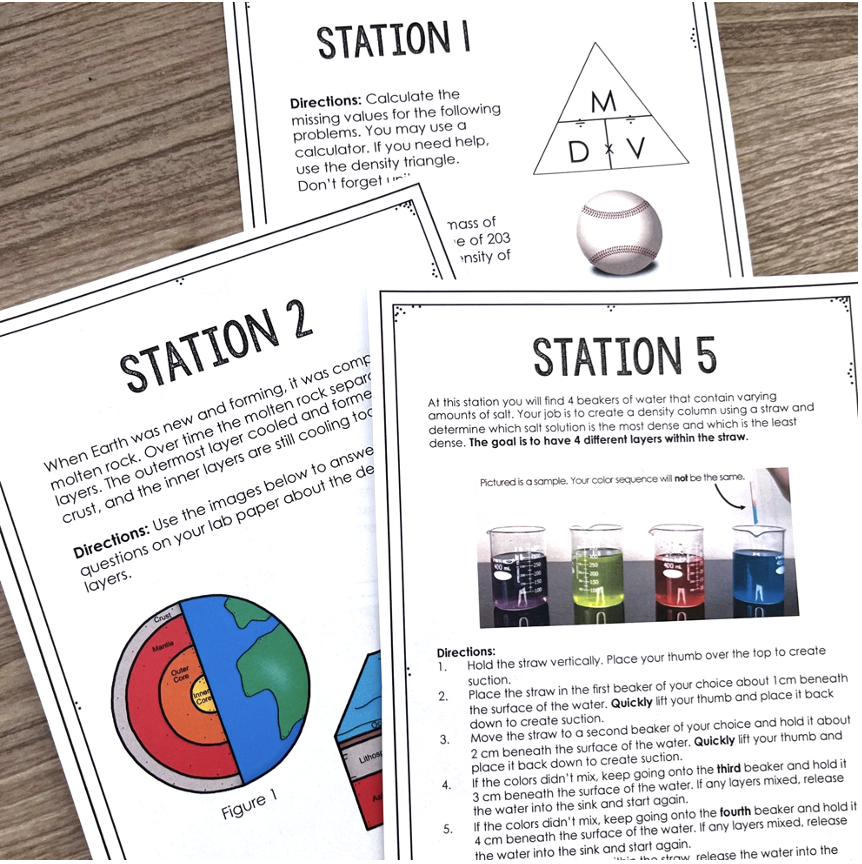
If you are a fan of stations, check out these 10 station activities! Students rotate around the room and complete ten tasks calculating density, doing a mini-experiment, completing reading activities and more. You can see more details and purchase on my website or on TpT .
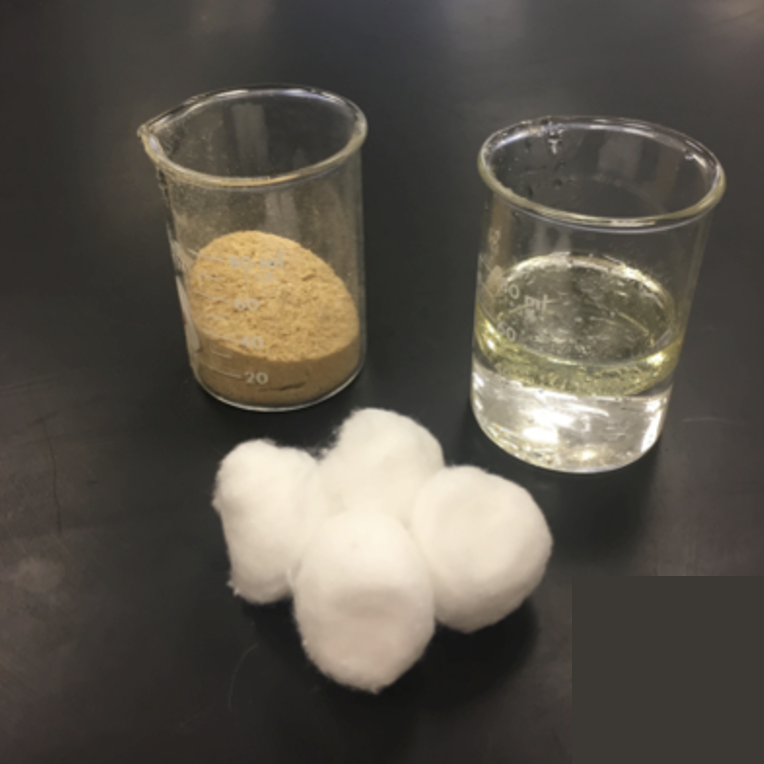
I remember watching the BP oil spill back in 2010 and feeling so heartbroken and helpless. I couldn’t do anything personally to help, but I sure could teach my students about it and help them understand the impact of oil spills on marine life!
In this lab, students try and figure out the best method for absorbing oil off the surface of a beaker of water. I provided a variety of materials for students to choose from, and they had to test which method was most effective. A lesson and lab worksheet can be found in this bundle on my website or on TpT .
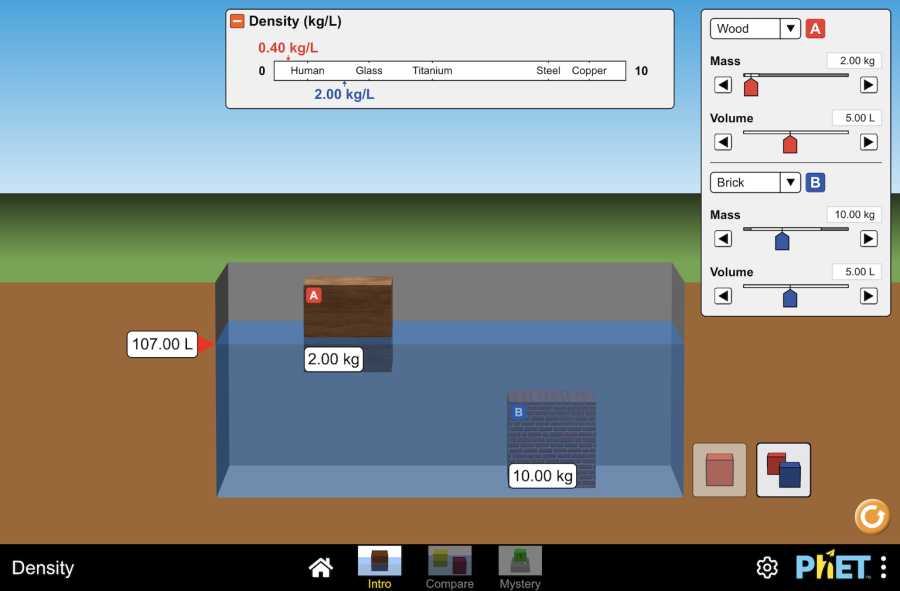
Prefer a virtual lab, or need a quick sub plan? PHET has a density simulation that will meet your needs! If you create a free account, you can also download pre-made worksheets that accompany the simulation.
I hope you and your students enjoy one (or more!) of those labs!

- Read more about: Chemistry , Fun Stuff
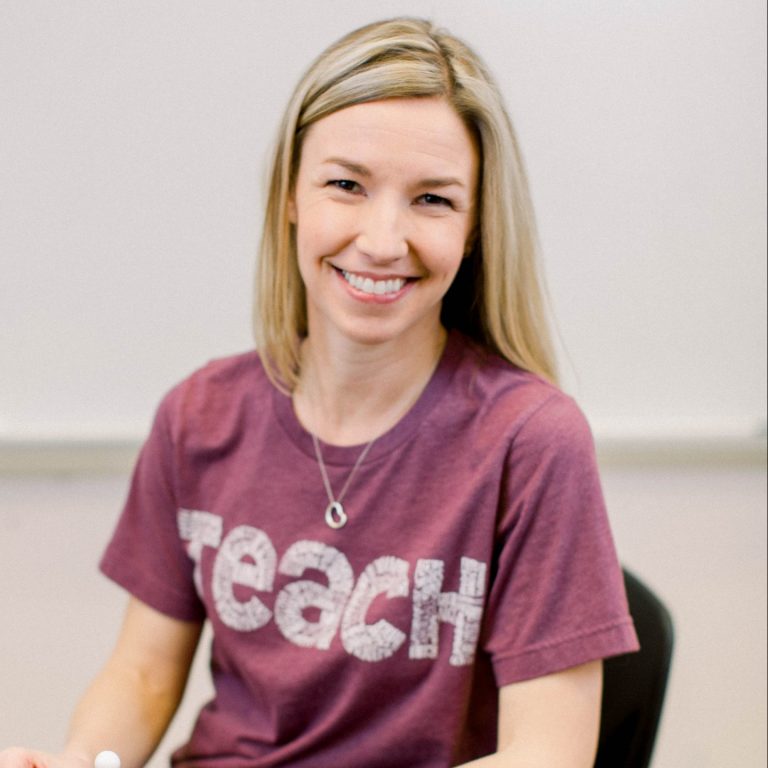
Hi, I'm Becca!
Search the site, browse by category.
- Back to School
- Biochemistry
- Body Systems
- Classification
- Classroom Decor
- Classroom Management
- Distance Learning
- End of the School Year
- Experiments
- Field Trips
- For NEW Teachers
- Formative Assessment
- Media in the Classroom
- Microscopes
- Photosynthesis & Respiration
- Plate Tectonics
- Sustainability
- Teacher Tips
- Weather and Climate
Get Freebies!
You might also like....
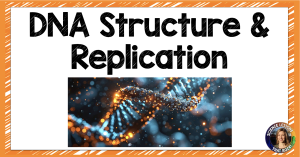
Teaching DNA Structure and Replication just got easier
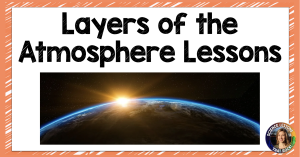
10 Atmosphere Lessons for High School

Read Aloud Closure Assignments

Want a fun way to practice science vocabulary? Try out seek and finds!

Privacy Overview

Reading & Math for K-5
- Kindergarten
- Learning numbers
- Comparing numbers
- Place Value
- Roman numerals
- Subtraction
- Multiplication
- Order of operations
- Drills & practice
- Measurement
- Factoring & prime factors
- Proportions
- Shape & geometry
- Data & graphing
- Word problems
- Children's stories
- Leveled stories
- Sight words
- Sentences & passages
- Context clues
- Cause & effect
- Compare & contrast
- Fact vs. fiction
- Fact vs. opinion
- Main idea & details
- Story elements
- Conclusions & inferences
- Sounds & phonics
- Words & vocabulary
- Reading comprehension
- Early writing
- Numbers & counting
- Simple math
- Social skills
- Other activities
- Dolch sight words
- Fry sight words
- Multiple meaning words
- Prefixes & suffixes
- Vocabulary cards
- Other parts of speech
- Punctuation
- Capitalization
- Narrative writing
- Opinion writing
- Informative writing
- Cursive alphabet
- Cursive letters
- Cursive letter joins
- Cursive words
- Cursive sentences
- Cursive passages
- Grammar & Writing
Breadcrumbs
Teaching Kids about Density
This simple experiment can help children grasp the concept of density by observing real-life examples and understanding the relationship between mass, volume, and density.
Materials needed for the density experiment
A piece of cork
A piece of wood
A piece of metal (such as a small metal bolt or nut)
A container of water
Optional: a scale to measure mass
Introduce the concept of density
Explain that density is how much mass is contained in a given volume. It's a measure of how tightly matter is packed together. Higher density means more mass in a given volume, while lower density means less mass in the same volume.
Make a prediction
Ask your kids to predict which material they think will float and which will sink in water.
Instructions
Testing in water: Drop the cork, wood, and metal separately into the container of water and observe what happens. Discuss the results.
The cork will likely float because it has a lower density than water. Explain that cork is less dense, so it floats on water due to the buoyant force.
The wood might also float, depending on its density. Discuss how some types of wood float (like balsa wood) due to their lower density, while denser woods might sink.
The metal will sink as it is more dense than water. Metals generally have a much higher density compared to water, causing them to sink.
Optional measurement
If you have a scale, weigh each object to show that even though the metal piece may not be much larger in size, it is significantly heavier than the other materials, illustrating its higher density.
Discuss the results with your kids. Emphasize that density is about how tightly the particles in an object are packed together. The concept is about both mass and volume. The metal, being the most tightly packed, has the most mass in the least amount of space (highest density), while the cork, being the least dense, has less mass in the same space, causing it to float.
This content is available to members only.
Join K5 to save time, skip ads and access more content. Learn More
Skip to Main Content

Liquid Density Experiments
Liquid Density Experiment
- 3 150 mL beakers (or use glass jars or clear plastic cups)
- vegetable oil (you can also experiment with various types of oil, i.e. olive oil, lamp oil, baby oil)
- several small objects - raisins, paperclips, pennies, small corks, etc.
- Write down what you think will happen when you place each object into the three different liquids based on your guess of the density of liquids. Because these liquids will have different densities, there will be a density tower, or different layers, that are visible, sort of like being able to see ice cubes (frozen water) in room temperature water.
- Pour 150 mL of water into beaker #1, 150 mL of corn syrup into beaker #2, and 150 mL of vegetable oil into beaker #3. (If you are using glass jars, use 2/3 cup of liquid, which is approximately 150 mL.)
- Gently set a raisin in each beaker. Does it sink or float? Write down what happens to the raisin in each beaker.
- Take the raisins out of the beakers and try a different object, such as a paperclip or cork. Record what happens in each beaker.
View this post on Instagram A post shared by Home Science Tools (@homesciencetools)
Were your predictions right? Did the raisins and other objects sink and float when you expected them to? Did they float in one liquid and sink in another? Why do you think they acted the way they did?
The less dense liquid will float on top of the more dense liquid. If one of your objects floated in the corn syrup but sank in the water, what does that tell you about the densities of water and corn syrup? Take the experiment a step further to find out more.
- 600 mL beaker (or use a large jar)
- corn syrup and/or maple syrup
- vegetable oil (you can also experiment with various types of oil, i.e. olive oil, lamp oil)
- food coloring
Which is the most dense: water, corn syrup, or vegetable oil? Which is the least dense? Based on your results from experiment #1, predict which liquid you think is the most dense and which you think is the least dense.
- Place a few drops of food coloring into the beaker of water so you will be able to tell it apart from the other liquids. (This is not necessary if you are using dark corn syrup.)
- Carefully pour 200 mL of each of the liquids into a 600 mL beaker or a large jar. Let them settle.
- What happened? Did the three liquids mix together or separate into layers? Which liquid is at the bottom of the jar? Which is at the top?
Was your prediction right? If so, the liquid you thought was the most dense should be at the bottom of the jar. The next dense will float on top of that, and the least dense will float at the very top.
Now you know how the densities of the three liquids compare to each other. If you want to find out the approximate density of each, you can calculate it using this formula: Density = Mass/Volume.
On Earth, we measure mass (how much of a substance there is) by calculating weight (how heavy it is). Weigh each liquid in grams (make sure you subtract the weight of the beaker!) and then divide that number by the volume (number of milliliters) of the liquid.
The answer is density in grams (g) per milliliter (mL).
(Your answer will be more exact if you use a graduated cylinder instead of a beaker to measure the volume and weigh the liquid.)
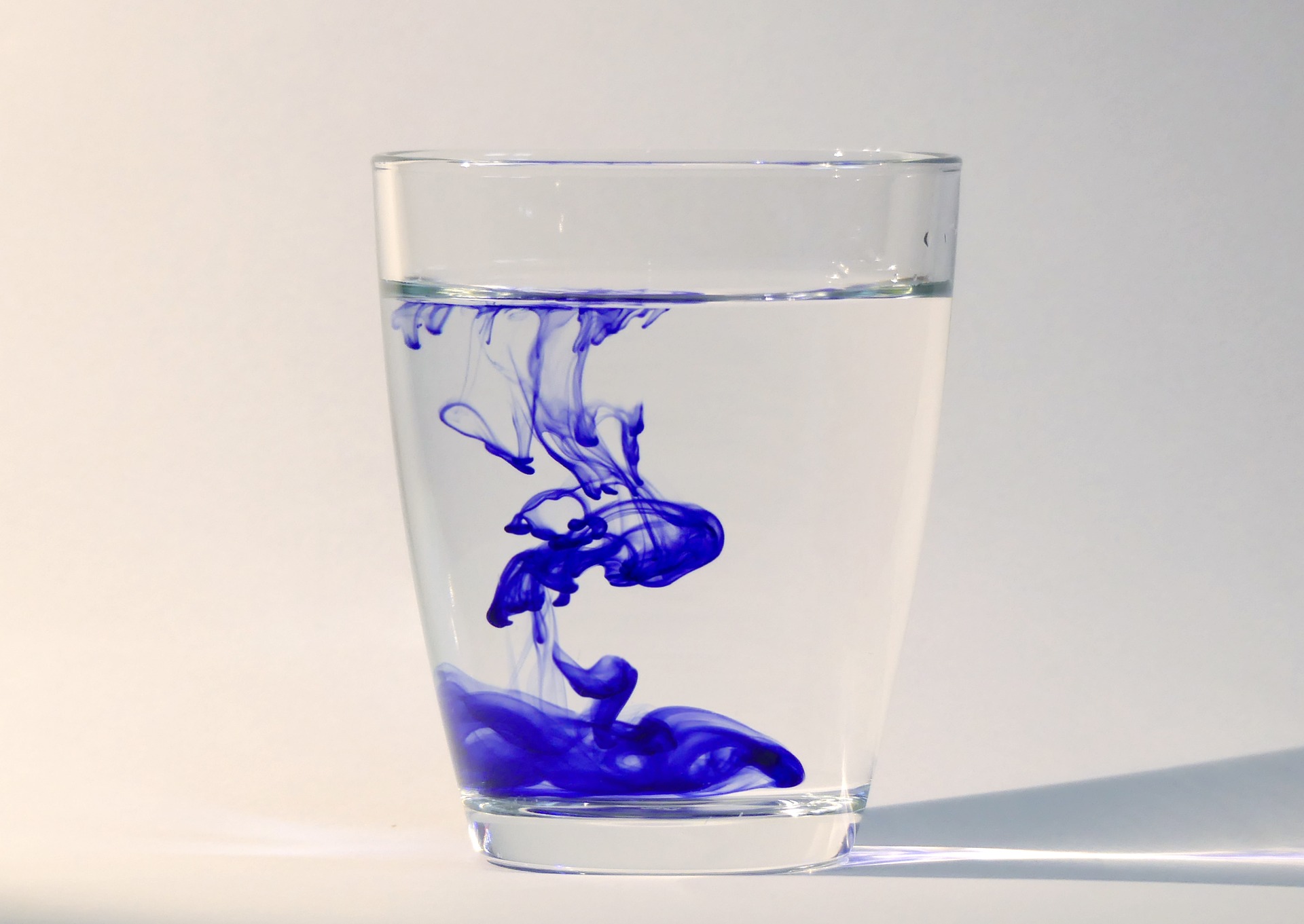
Experiment #3: Hot and Cold
- 2 150 mL beakers (or use glass jars or clear plastic cups)
- food coloring (red and blue)
- Narrow Glass or beaker
Does temperature change the density of water? Write down what you think will happen when you mix cold water and hot water.
- Fill two beakers with 150 mL (2/3 cup) of water. Put several drops of blue food coloring in one beaker, and several drops of red in the second.
- Add a handful of ice to the blue water and put it in the refrigerator for a few minutes.
- Put the red beaker in the microwave for a minute.
- Take the blue beaker out of the fridge and the red beaker out of the microwave.
- Pour some of the blue water into the 10 mL graduated cylinder or narrow glass.
- Using a pipet, slowly add red water a drop at a time and watch what happens. (This part may take a little practice—if you add the red water too fast you will force the colors to mix. Hold the pipet near the surface of the water and keep trying until you get it!)
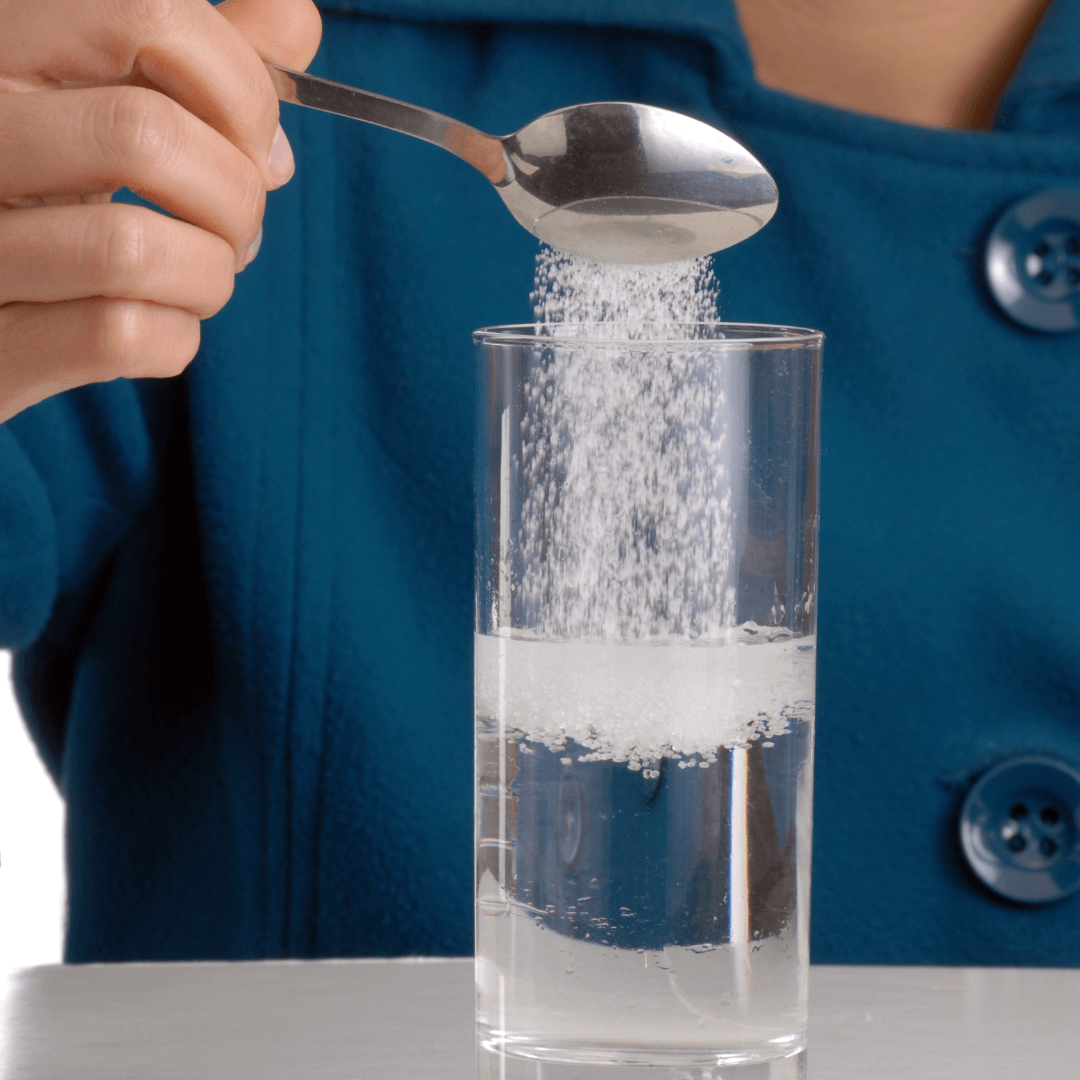
Experiment #4: Salty or Sweet
- 3 150 mL beakers (or use glass jars or clear plastic cups)
- 10 mL graduated cylinder (or tall, narrow glass)
- stir utensil
Will adding salt make the water more dense? Will adding sugar make the water more dense? Which is more dense, sugar water or saltwater? Write down what you think will happen to the density of water if you add salt or sugar.
- Fill three beakers with 150 mL (2/3 cup) of water. Add food coloring to make blue, red, and green water.
- Add 2 teaspoons of salt to the red beaker and stir until the salt is dissolved. Add 2 teaspoons of sugar to the blue water and stir until it is dissolved.
- Try putting a raisin in each of the beakers. Does it float? Remove the raisins with a spoon.
- Pour some of the red (salty) water into the graduated cylinder. Using the pipet, slowly add the blue (sugar) water one or two drops at a time. Record which sinks to the bottom and which floats on top.
- Add the green (pure) water drop-by-drop to the other two and record what happens.
Great Science eBooks

We get it. Science can be messy. But Home Science Tools' products and service can handle it.
Our products are durable, reliable, and affordable to take you from the field to the lab to the kitchen. They won't let you down, no matter what they're up against. Whether it's (over)eager young scientists year after year, or rigorous requirements that come once-in-a lifetime.
And if your science inquiry doesn't go as expected, you can expect our customer service team to help. Count on friendly voices at the other end of the phone and expert advice in your inbox. They're not happy until you are.
Bottom line? We guarantee our products and service won't mess up your science study—no matter how messy it gets.
Questions? Get in touch with our Customer Service team.
- Skip to primary navigation
- Skip to main content
- Skip to footer
Science Struck
5th Grade Science Fair Projects
Like it? Share it!
5th graders delight in engaging in hands-on science experiments that stimulate their curiosity, ignite their passion for learning and form meaningful science fair projects. These creative projects explore biology, chemistry and physics while engaging students in core aspects of scientific inquiry.
Experience this classic experiment designed to examine density. Watch as different soda floats or sinks!
Water Purification
Distillation allows students to access pure water from water contaminated with contaminants or diseases-causing elements. They learn how to heat it to its boiling point before cooling it to form vapor before collecting pure water as part of its final output.
Science often seems like magic until one understands its underlying principles. Students can build an engaging project using Archimedes’ screw to learn about mechanical energy while having fun!
Kids love this classic science experiment that illustrates density. Plus, it involves food! A 70s trend has made a comeback as part of a 5th grade science fair project to introduce children to acids and bases.
Bacterial Colonies
Bacterial colonies are collections of microorganisms that come together to form one mass. Scientists use them on nutrient agar plates so they can study both cells and colony structure; additionally they often use these colonies in research projects to produce proteins or enzymes for study purposes.
Allow students to explore how genetics impact inherited traits with this hands-on project that investigates recessive and dominant genes. It provides an engaging visual way of learning more about genetics.
Participating in science fair projects provides 5th graders with invaluable research and communication skills. When implemented under guidance from experienced mentors, such projects provide rewarding opportunities to build core elements of scientific process.
Glow Sticks
Glow sticks are an engaging way for children to explore chemistry. This science experiment shows how brightness of glow sticks changes with temperature change in water, providing an engaging hands-on way for teaching about chemiluminescence, energy transfer and how heat accelerates chemical reactions.
Students will gain knowledge about Chromatography with this simple and inexpensive science experiment that uses common lab techniques. Students will get to see first-hand how color separating works as they test out a classic catapult made out of wood craft sticks to test out their designs for strength.
By creating quicksand, students learn about non-Newtonian fluids – meaning fluids which change state under pressure but behave as solids when not. Furthermore, this experiment also introduces them to concepts like saturation and friction.
Students understand that quicksand can cause drowning, yet does not result in them falling to the bottom of a bottomless pit as depicted in movies. Bonn studied the properties of real quicksand which is composed of both sand and salt water; his research demonstrated that trying to walk out while it was still solid would result in death for anyone trying to exit it at once.
This project allows students to explore engineering principles as they create and design a ball run, while simultaneously applying math through graphing results and comparing graphs of graphed results.
Marshmallow Jump
Marshmallow jumps are fun STEM projects that teach children about gravity, density and Boyle’s law while simultaneously helping develop critical thinking skills in children.
Marshmallow painting is an enjoyable and cost-effective way to stimulate creativity and self-expression, as well as an accessible science experiment using common household ingredients.
Start this easy, yet entertaining experiment to test the insulating properties of marshmallows – it will not only show their insulation power but will also build teamwork!
Put students’ engineering skills to the test with this easy marshmallow plane project! Students will discover how design changes can alter launching distances; additionally, this project offers insight into air pressure and density.
Surface Tension
Students using the scientific method will investigate how surface tension influences various phenomena. For instance, they can observe why water droplets remain together instead of spreading out across surfaces like paper. Students can test how many drops a coin can hold before creating eye-catching hydrophobic sand using borax mixed with cornstarch and glue for even further exploration of this subject matter.
Surface tension allows paper clips to float in water, providing students with an opportunity to experiment with various water temperatures and types of clips to see if there are differences in floating behaviors. They can also investigate capillary action by monitoring how water ascends cotton fibers or plant stems – students could even create paper airplanes and see how far they fly!
Get Updates Right to Your Inbox
Privacy overview.
Cool Science Experiments Headquarters
Making Science Fun, Easy to Teach and Exciting to Learn!
Science Experiments
Floating Egg Science Experiment
Can you make an egg float in water? In this simple science experiment, we take just a few minutes to test the laws of density and discover just how easy it is to make an egg float!
Below you’ll find detailed instructions and our demonstration video as well as the scientific explanation of “why it works.” We’ve also included a more ideas to explore the concept a bit further.
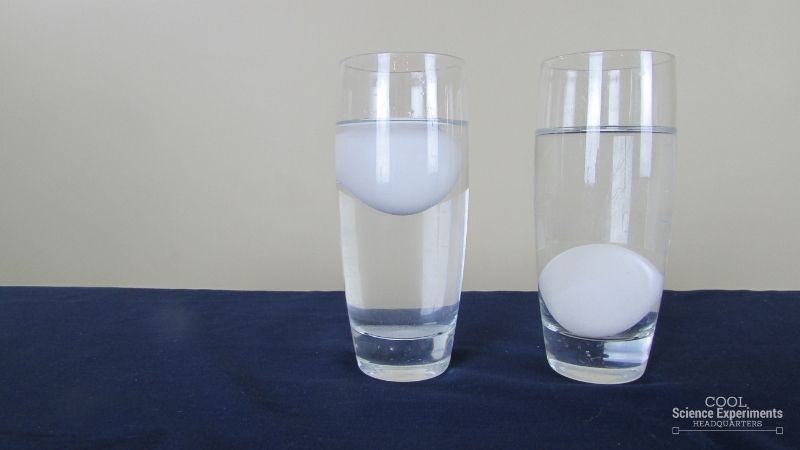
JUMP TO SECTION: Instructions | Video Tutorial | How it Works
Supplies Needed
- 2 Tall Drinking Glass
Floating Egg Science Lab Kit – Only $5
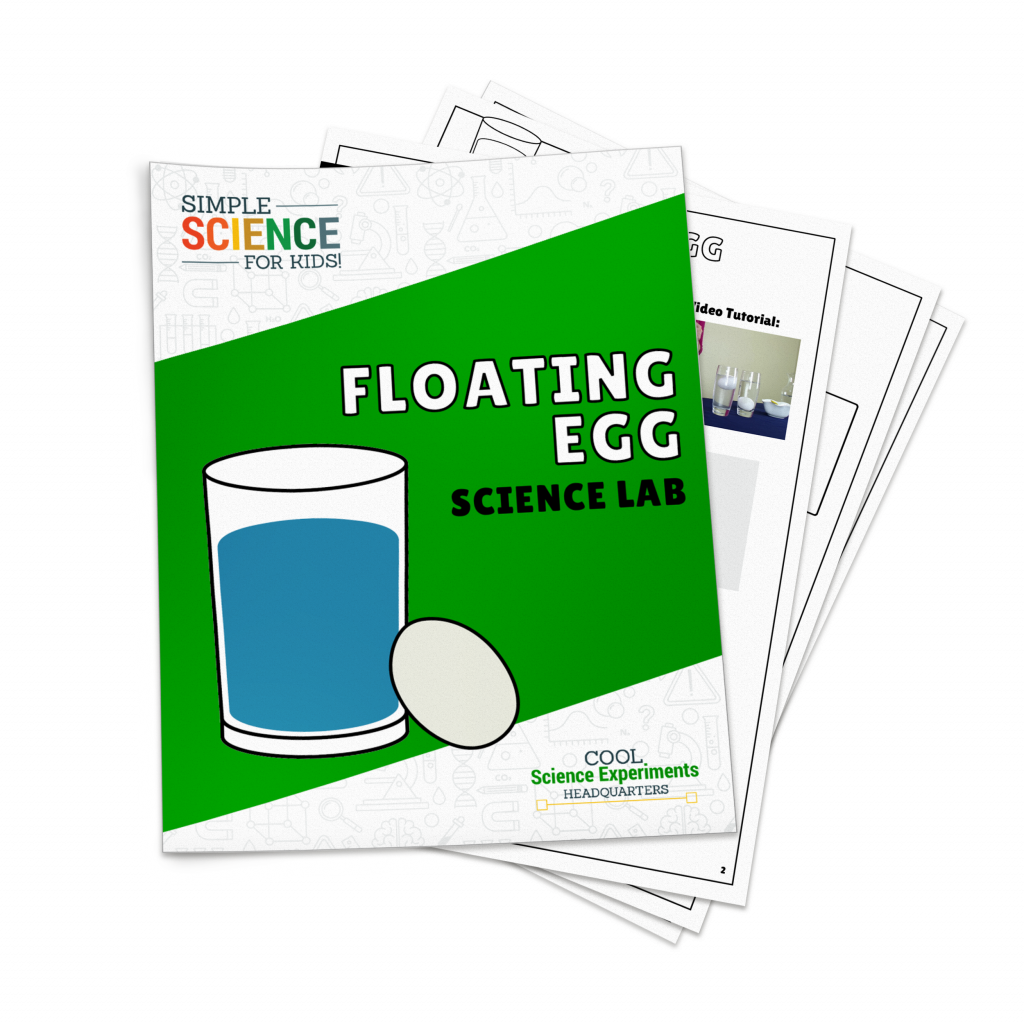
Use our easy Floating Egg Science Lab Kit to grab your students’ attention without the stress of planning!
It’s everything you need to make science easy for teachers and fun for students — using inexpensive materials you probably already have in your storage closet!
Floating Egg Science Experiment Instructions
Experiment Setup – Start with some observations about the eggs. Note that they are both raw eggs and have a similar size and weight. Then ask some questions. Do you think that the eggs will sink or float when placed in water? Do you think it’s possible to make them float? If so, how? Write down your hypothesis (prediction) and then follow the steps below.
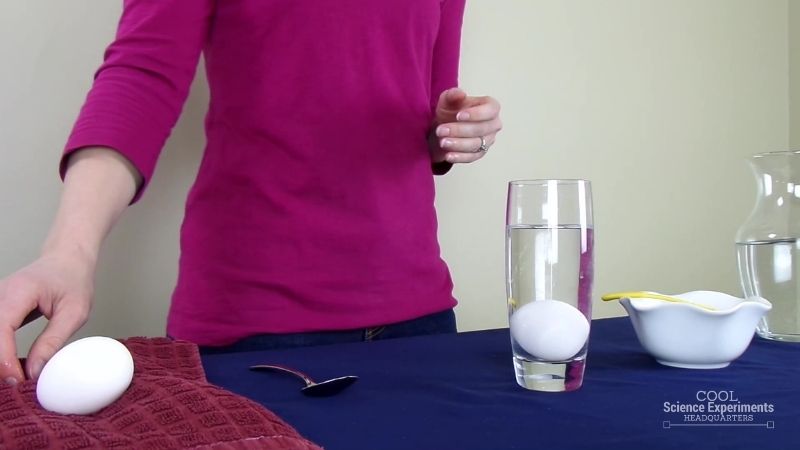
Step 1 – Fill a tall drinking glass about 3/4 full of water and carefully place the egg into the glass. What happens to the egg? That’s right, it sinks to the bottom.
Did you know there is a way to make it float? Continue on in the experiment to find out how.
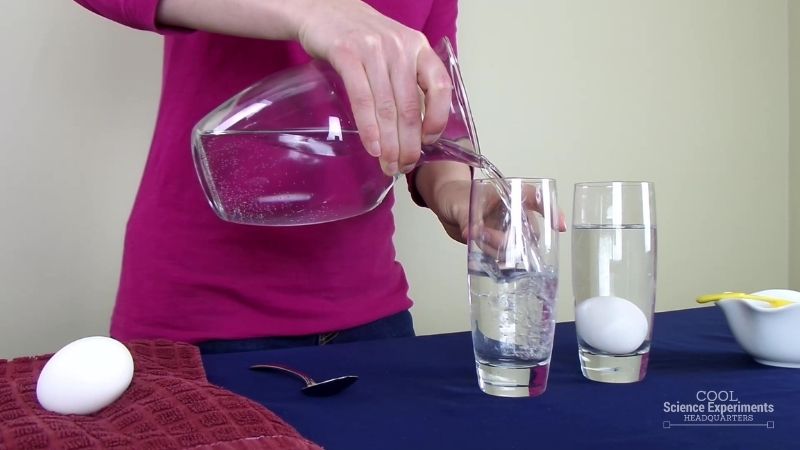
Step 2 – Fill another tall drinking glass about 3/4 full of water.

Step 3 – Add 3 Tablespoons of salt to the water and stir until it is completely combined. What do you think will happen if you place the egg into the glass with the salt water? Write down your hypothesis (prediction) and then test it to see if you were right.
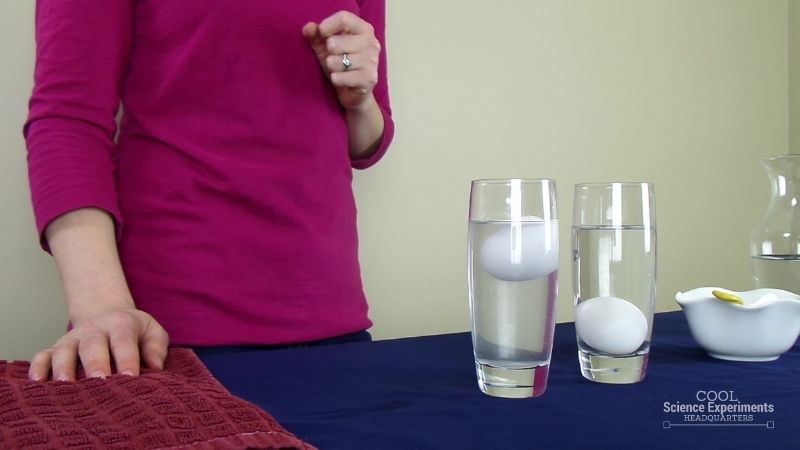
Step 5 – Next carefully place the second egg into the glass with the salt water. What happens to the egg? That’s right, it floats. Take a moment to make some observations. Why do you think one egg sinks and the other egg floats?
Find out the answer in the how does this experiment work section below.
Video Tutorial
How Does the Floating Egg Science Experiment Work
Why does the egg sink in regular tap water, but float in saltwater? The answer lies in the density of water!
Density is a measure of the mass per unit volume of a substance. Simply said, how much “stuff” in a given volume. Water has a density of 1 g/mL (g/cm3). Objects will float in water if their density is less than 1 g/mL. Objects will sink in water if their density is greater than 1 g/mL.
The egg will sink in regular tap water because the density of the egg is greater than the density of water. The egg’s density is only slightly higher than water at 1.03 g/mL, but that is enough to make the egg sink.
When you add salt to the water, you are increasing the density of the water by adding more mass (or stuff) in the given volume. You don’t really change the volume of the water by adding salt. By adding enough salt, you increase the density of the water so that it is higher than the density of the egg and the egg will float!
Other Ideas to Try
Try this experiment again, but instead of using an egg use a potato slice or a carrot slice. You will have to play around with the amount of salt you add to the water because all objects have their own unique density. Add salt a tablespoon at a time and mix well until you cannot see any salt in the solution, then add your object to see if it floats or sinks. Remove your object and keep adding salt until you can get your object to float. To make it a true science experiment, create a data table to keep track of how much salt you add to the solution.
I hope you enjoyed the experiment. Here are some printable instructions.
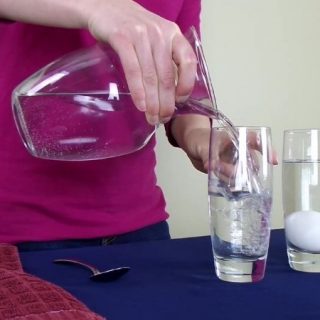
- Drinking Glass
Instructions
- Fill a tall drinking glass about 3/4 full of water
- Place the egg into the glass of watch and watch it sink
- Fill another tall drinking glass about 3/4 full of water
- Add 3 Tablespoons of Salt and stir until combined
- Place the egg into the glass and watch it float
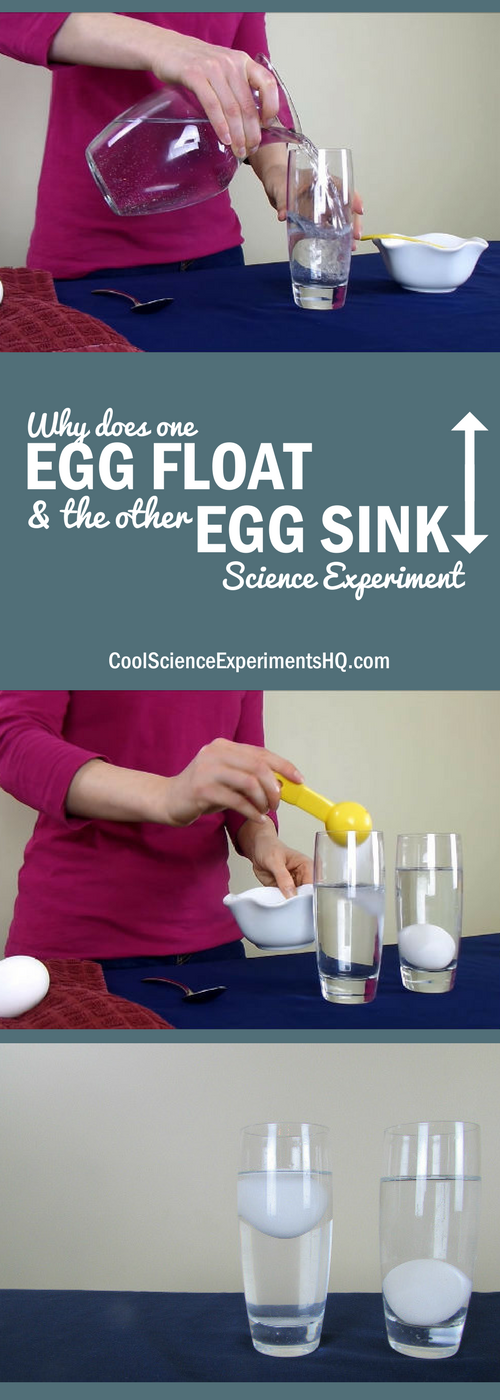
Reader Interactions
April 3, 2019 at 2:58 pm
i love this experiment
January 23, 2020 at 11:14 pm
I really loved doing this experiment with my class
August 26, 2020 at 2:59 pm
The egg floats because the density of the salt water changes to be greater than the egg and the density of the egg becomes less dense so then the egg floats. But when you put an egg in tapwater the density of the egg is greater than the density of the tapwater which makes the egg sink.
January 20, 2022 at 11:33 am
bro I loved this experiment it was amazing!!! I tried it out with my friends and it worked! Thank you!
February 10, 2022 at 7:19 pm
this is very helpful thank you
March 7, 2022 at 9:56 am
i loved this experiment : )
April 16, 2023 at 11:35 am
I love doing this experiment at home
May 1, 2023 at 9:00 am
It’s amazing thank you for sharing.
November 3, 2023 at 10:18 am
This is my science fair experiment! YAY!
November 25, 2023 at 7:41 am
wow what a great experiment m!!!
Leave a Reply Cancel reply
Your email address will not be published. Required fields are marked *
Save my name, email, and website in this browser for the next time I comment.

- Privacy Policy
- Disclosure Policy
Copyright © 2024 · Cool Science Experiments HQ
- Skip to primary navigation
- Skip to main content
- Skip to primary sidebar
Teaching Expertise
- Classroom Ideas
- Teacher’s Life
- Deals & Shopping
- Privacy Policy
21 Colorful and Creative Density Experiments for Kids!
August 29, 2023 // by Sharayah Lynn Grattan
To put it simply, how much of something can fit into a container or space? If we figure that out, we know the substance/object’s density! Many science concepts are hard to understand for kids, but density is excellent because it is very visual.
From liquid density experiments with food coloring to ping pong balls dropped in vegetable oil, we have all the whacky experiment ideas that will get your mini mad scientists jazzed about mass and volume.
1. What’s The Heavier Liquid?
To understand the concept of density in all of its forms, it helps to start with liquids we can easily differentiate. This fun experiment uses a glass of water, vegetable oil, food coloring, and salt.
Learn More: Buggy and Buddy
2. The Floating Orange
Here is a simple science experiment that teaches an important lesson about density. Grab 2 oranges, peel one and leave the skin on the other. Fill 2 glasses with water and put each orange in a cup. Watch your kid’s eyes get huge as they see the peeled orange sink and the unpeeled orange float!
Learn More: This Little Home of Mine
3. Burning Candle Density Experiment
Carbon dioxide has a higher density than air, so for this cool density experiment, you’ll want to have 3 candle sticks that are different lengths. Place them close together and light their wicks, then cover all 3 with a small glass container. Notice how the shortest candles go out first!
Learn More: Collection of Physics Experiments
4. Liquid Rainbow of Density!
For this density demonstration, you’ll have to prepare some liquids from your kitchen and bathroom. The liquids make distinct layers in the clear jar due to their different levels of density.
Learn More: Raising Dragons
5. Density-Inspired Sensory Bottles
Before you start this fun science experiment, explain the steps to your kids and help them come up with some questions and hypotheses about what they think will happen. Using 2 clear individual containers, fill one with water and one with corn syrup and leave some space for air, then add a few dense objects like buttons or rubber balls. How do the objects move in each liquid?
Learn More: The Educators’ Spin On It
6. Float or Sink?
The beginning of this experiment for kids starts with adding different liquids to a clear jar. Some you can try are honey, water with food color, and cooking oil. Then grab a variety of household items small enough to fit inside, and see where they settle in the layers of liquid density!
Learn More: Looking Out Loud
7. The Science of Grapes
Whether your kiddos like green or purple grapes, they will definitely LOVE this fun density experiment! We are testing to see if there is a difference in buoyancy in salt water versus tap water. Fill 2 glasses of these different water types and drop some grapes in. Which will sink and which will float?
Learn More: Rookie Parenting Science
8. Popcorn Mixing Magic!
To demonstrate how denser objects behave compared to lighter ones, we can do this exciting experiment using unpopped popcorn in a clear jar. For the light ball, you can use a ping pong ball, and the heavy ball should be metal for best results.
Learn More: Steve Sprangler
9. Can Eggs Float in Water?
You can teach your kids the science of density while preparing breakfast! Put water in 3 clear plastic containers and mix salt in one, sugar in another, and leave the 3rd alone. The 4th cup will have saline water. Grab 4 eggs and have your kids carefully drop an egg into each cup to see if they sink or float!
Learn More: Go Science Girls
10. The Density of Planets
The science of space for kids starts now! Out of all 8 planets, the least dense is Saturn. To explain this idea to your kids, the first step is to go outside and collect 7 small rocks together. Then your little artists can paint them to look like mini planets. To demonstrate, fill a kiddy tub with water, drop in your rocks, and watch them sink. For Saturn, use a foam or light ball that will float.
Learn More: Rainy Day Mum
11. The Beach in a Jar
Using our knowledge of density, we can create the layers of the beach inside a jar! From the sand to the sea floor, all the way up to the fluffy clouds. Check out the link to see how to assemble this simple density experiment.
Learn More: Lemon Lime Adventures
12. Sugar Rainbow Density
There are 6 colors in the rainbow, so put a teaspoon of sugar in 6 small cups. Grab your food coloring and add a few drops to the sugar then add water and stir. Using a syringe, add a little bit of liquid from each cup and watch how they make rainbow layers in the tube!
Learn More: Teach Beside Me
13. DIY Lava Lamps!
Did you know the far-out science behind lava lamps isn’t that hard to recreate? Using corn syrup, water, Alka Seltzer tablets, oil, and food coloring, you can help your kids make their own!
Learn More: Babble Dabble Do
14. Ocean Layers Experiment
There are 5 layers in the ocean and each has its own density. To create an ocean-themed density jar, you’ll add each liquid to the jar from most dense to least dense. Make sure each liquid has blue or some food coloring mixed in.
Learn More: Darcy and Brian
15. Racing with Marbles
For this exciting race, you’ll want to fill a few clear glasses with different liquids, some options are baby oil, corn syrup, honey, or shampoo! First, have your kids guess just by appearance which liquid they think is the densest. Then drop your marbles in and see in what order they sink!
Learn More: STEAM-Powered Family
16. Temperature and Density Experiment
Which is more dense, hot water or cold water? Well, turns out that because hot water molecules move faster this makes them less dense. So if you add different food coloring to hot water and cold water, pour the cold water into the jar first, then add hot water, the colors will stay separate!
Learn More: STEAMsational
17. Colorful Water Fireworks!
So the trick to this experiment is mixing the food color and oil together first, then pouring it into your warm water to create an awesome color show in a jar!
Learn More: Go Science Kids
18. Balloons of Density
Grab some balloons and get testing to help your kiddos better understand the 3 states of matter as well as their varying densities! Fill 3 balloons, 1 with air, 1 with water, and the 3rd with frozen water. Have your kids pick each balloon up and see which is the densest!
Learn More: 123 Homeschool 4 Me
19. USA Inspired Density Tower
Here is a density tower your kids can drink! There are a few different liquid options you can choose from that are blue and red to create your patriotic concoctions.
Learn More: Steve Spangler Science
20. Earth’s Atmosphere Density
Not only is this a lesson in density, but also your kids can learn more about the 5 layers of the Earth’s atmosphere and how they settled in the pattern they did.
Learn More: Line Upon Line Learning
21. Density in Clay
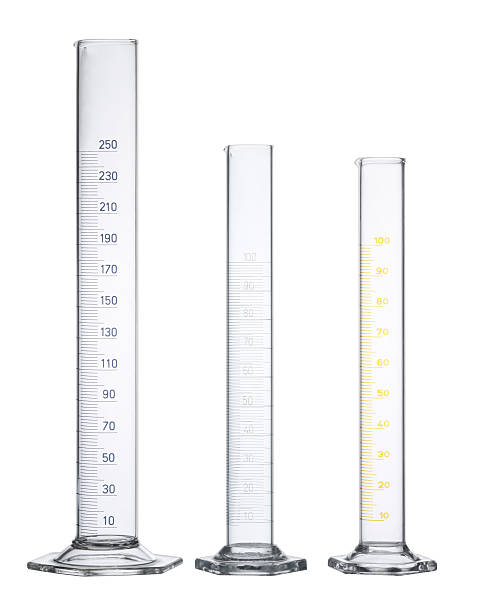
This fun and simple lab experiment is for kids a bit older that have access to measuring tools, clay, and a few small objects. Make sure their items are the same size and shape them and cover them in clay. Put them in water and see how their density will make some sink and others float.
Learn More: Engaging Science Labs
10 Simple Experiments for Density and Buoyancy and Air Pressure
Updated: Jun 24, 2020

Develop an understanding of air pressure, buoyancy, and density using a series of hands-on labs.
When I’m teaching a science concepts like air pressure and density my goal is to help kids build mental models of what’s going on. Whenever possible I try to start with something they can touch and feel and experience. Here’s a simple sequence we did in my classroom. I hope you can see how students’ understanding builds.
1. Air is Stuff: Air Pressure Experiment with Water
This activity is a good place to start. When you try to pour water into the jug, it won’t go in. This is a concrete way to show that air is stuff. This always surprises and puzzles kids and encourages them to play. And when they’re intrigued, kids engage with difficult material more easily.

This is where we begin our study of buoyancy. Can you see where this will lead?
If you don’t get the idea that air is stuff, you won’t believe that it has weight. And if you don’t believe that air has weight, you won’t see how it can produce pressure. And if you don’t understand how air produces pressure, you won’t be able to see how it creates buoyancy. And if you don’t understand how buoyancy works, then it’s tough to grasp the concept of density. Sure, you can memorize the formula for density, but what does that tell you about density? BTW what IS the formula for density? And will it be on the test?
2. Matter Presses: Understanding Pressure
Once we proved to ourselves that air is stuff, we’ll play with the concepts of weight and pressure. This activity is free on my website. If you’re interested in a copy, you can sign up here.

This is a super simple activity to show kids how the weight of an object (our body) doesn’t change as you change your position (squatting, sitting, standing on tiptoe), yet its pressure does. It’s a concrete way for kids to feel the connection between the concepts of weight and pressure.
We’re just getting started on our investigation into density, buoyancy, and air pressure. These three concepts are related, and it’s helpful to study them together. In this activity, kids see how pressure comes from weight. We’ll continue that line of thought in the next couple of activities.

3. Streamlines: Water Pressure Experiments with a Water Bottle
Have you tried this experiment? It’s easy, a little messy, and super fun. Plus, kids find it intriguing, so that’s a huge point in its favor.
How many observations can you make? Note how the lower streams are shooting farther than the upper ones. What could you conclude from that?
Click here (or on a pic) for middle school labs on this topic.
This is a visual example showing how pressure comes from weight. The greater push comes from the taller column of water. Kids can prove this to themselves by comparing bottles of different diameters and heights. It’s easy to conclude that it’s only the height of the water that changes the shape of the squirt.

This activity gives good evidence that the water sitting above the hole produces the pressure. This is a direct correlation to air pressure, which comes from the weight of Earth’s air sitting on top of you.
The difficulty with understanding air pressure is that we ignore the surrounding air. We rarely think of air as sitting on us. It’s invisible so we forget it’s there. Time to roll the tape from activity #1 . Air is stuff. It’s always there and we need to remember this to understand air pressure.
If you climb a mountain to a place where there’s less air above you, there’s less pressure. And vice versa, the lower you go, the higher the pressure. We call sea-level standard pressure, but if you go below sea level (into a cave for instance) air pressure increases.
[Students may know that air high in the atmosphere is thinner than that near sea level. While that’s important, it’s a separate issue and we don’t deal with it yet.]
This is part 3 of our conceptual journey—we’ve determined that air is stuff and we’ve connected weight to pressure. The definition of stuff is that it has weight and takes up space. And if air has weight, it must be able to produce pressure by sitting on stuff.
And what keeps air sitting on Earth? The same force that keeps every other substance sitting on Earth… gravity! Just because it’s light and thin and invisible doesn’t make it immune to gravity. Gravity gives air its weight and air’s weight produces pressure. It’s that simple. The complicated part is that we haven’t trained our brains to think in those terms. We forget that air is there and we forget that air is stuff. So it’s helpful to refer to experiments that kids have completed—like trying to pour water into a sealed bottle (experiment #1 ). The water won’t go in because the bottle is already full… of air.
And this is our job as teachers—to help kids think like scientists.
4. Nature Abhors a Vacuum: Playing with Suction Cups
Now that we’re beginning to get an idea of where air pressure comes from, what if we could change it? What if we could change the pressure around an object? How would that affect it? In this activity, we play with suction cups. Their shape allows them to trap some air and then change their volume.

If their volume increases but the amount of air inside stays the same, the pressure will drop. Now the inside pressure is less than the outside pressure. It’s this small difference that makes suction cups stick. The higher outside air pressure is pushing them against the surface, keeping them attached.
This is a good activity to delve into the idea that pressure can come from two different sources. We’ve already looked at what causes the outside, or atmospheric, pressure (air’s weight).
And now we’re looking at the pressure which comes from the air pushing against the sides of the container. All gasses exhibit this pushiness. This is a more common understanding of air pressure and one that confuses kids when they’re learning about atmospheric pressure.
5. Nature Abhors a Vacuum: Playing in the Tub
Who hasn’t tried this? Umm, a lot of kids apparently. Part of our job as science teachers is to help kids play with materials so they can discover concepts on their own. Play builds a library of phenomena and experiences that kids can refer to when unpacking their understandings. Here they see how they can lift a full, upside-down cup and it doesn’t empty. It remains full until the rim of the cup breaks the surface of the water. They can use a bottle of any shape or size and see the same results.

What keeps the water in the cup?
Water seeks its level by falling to the lowest point. But for water to leave this cup, a vacuum would have to form in the space since there’s no way for air to enter. The surrounding air pressure pushes on the surface of the water and holds the water in the cup.
What if the cup were very tall, wouldn’t the pressure from the water in the cup overwhelm the atmospheric pressure? Yup!

Normal air pressure is about 15 pounds per square inch. For a one inch column of water to weigh 15 pounds, it would need to be about 32 feet high.
Above 32 feet a vacuum would form and the water would not stay higher than that. This is the basis for early barometers. These were made with mercury because it’s super dense and therefore short enough to fit inside a room. Making a water barometer is a cool experiment if you have the time and space for it.
Do you see the barometer here? The sealed tube of mercury is inverted into an open dish of mercury, just like the experiment we did with the cup and water. As the room’s air pressure rises and falls because of changing weather, the height of the mercury will rise and fall.
(Click the image to go to the full painting)
6. Determining Density: An Experiment for Kids

This is the classic way to find the density of an object. While you can use anything that sinks, I prefer polymer clay. It’s sold under brand names Fimo and Sculpey, but there are off-brands too. The beauty of this clay is that it doesn’t dry out, doesn’t leave a residue, and you can use it in water.
But why clay? By using clay, you can show that density is a quality of a substance. It doesn’t change if you have more or less of the substance. Kids can calculate the density for two or three different-sized lumps to prove this to themselves.
Click the image to go to the lab directions.
7. How do Boats Float? A Buoyancy Lab
You can understand floating and sinking in two ways:
First, you can look at the way pressure changes with the depth or height of a fluid. As we saw in Activity #3 above, the pressure in a fluid depends on how deep the fluid is. The deeper you are, the higher the pressure is. So, if you’re standing in water, the pressure at your feet is higher than near your head. This difference in pressure causes a force that pushes you upward.

Do you float? It depends. You also have a downward force (your weight) so these two forces work against each other and the larger one wins.
Another way to look at sinking and floating is to realize that water holds up the water above it. If you could remove a chunk of water and replace it with another object of identical size, will that object float or sink? It depends. If the object weighs more than the same volume of water, then it will sink. If it weighs less, it will float. And if it weighs exactly the same, it will neither float nor sink but stay where you put it.
It’s this second idea that we’re exploring here. We’re determining how much water an object displaces and whether that amount of water weighs more or less than the object. The cool thing about this procedure is that you can use it with floating objects. Here the boat displaces an amount of water. If we collect and weigh this water, we see that it weighs more than the entire boat. Here we're using polymer clay which is cool because it won't float if it's a solid ball, but it does float if its shaped like a boat. You could also use a square of foil to shape an aluminum foil boat but it's a little less forgiving when trying to reshape it multiple times..
So the weight of the boat (a downward force) is less than what the water can support (the upward force) and the boat floats. If we loaded the boat with weights, it would still displace the same amount of water. When would it sink? At the point when its weight increased beyond the weight of the displaced water.
I like this setup because it’s simple and cheap to make and is easy to store.
8. Air Is Compressible: How to Deflate a Marshmallow
This activity uses two different pumps—one that pumps air into a bottle and one that pumps air out of a bottle. Can you think what beverage you might use each for?

I love using marshmallows for this since they’re soooo visual. This always draws a WOW from kids and they want to do it over and over. When you pump air in, the marshmallows contract and when you pump the air out, they expand. The marshmallows fatigue over time, but you can use them a few times for sure.
Here we’re back to exploring the idea that air pressure is a function of how much gas is inside a confined space. If you add more molecules to the space, the pressure goes up and if you take some out, the pressure drops. This doesn’t explain surrounding (ambient) air pressure or why that rises and falls, but it’s an important part of understanding.
9. Out with a Bang: Heat Causes Expansion

This is another not-to-be-missed activity that your students will want to try over and over. It’s simple and quick. I let them do it themselves, though I supervised closely.
Add a centimeter or two of water to an empty can. Place it on a hot plate until the water is at or near boiling. Using tongs, remove the can and invert it into a bowl of water. BANG! The can collapses instantly.
What’s going on? As you heat the water, it turns to gas and drives out much of the air that was filling the can. Since the water vapor is hot, it doesn’t take much to fill the can. When you place the can into the water, it cools and the water vapor condenses. The pressure in the can drops dramatically (since it’s sealed and no air can get in) and the higher outside air crushes the can.

Sometimes the can doesn’t get crushed, but fills with water. Can you see why? Here, the air pressure pushes water into the can until the air pressure inside and outside are equal. It’s the same explanation but with a different outcome. And if this happens, you can reuse the can for another try!
10. Local Pressure: Heat Causes Expansion

This is the last in our lineup. Here we add some very hot water to a milk jug and swirl it around to heat the plastic. Next we dump out the water and cap the jug and wait. Before long the jug implodes. It’s not as dramatic as the previous demo but it gets the point across. I appreciate doing different setups that focus on the same concepts. It helps solidify ideas.
Plus, we’re scientists, we repeat stuff.
As much as possible, we begin with concrete experiences that kids use to construct their understanding based on what they’re seeing. A sequence like this forms the basis of our comprehension and gives us something to discuss and return to again and again.
- Experiments & Activities
Recent Posts
Mitosis and Meiosis
Teaching Static Electricity Using VIPs
Dollar Store Optics
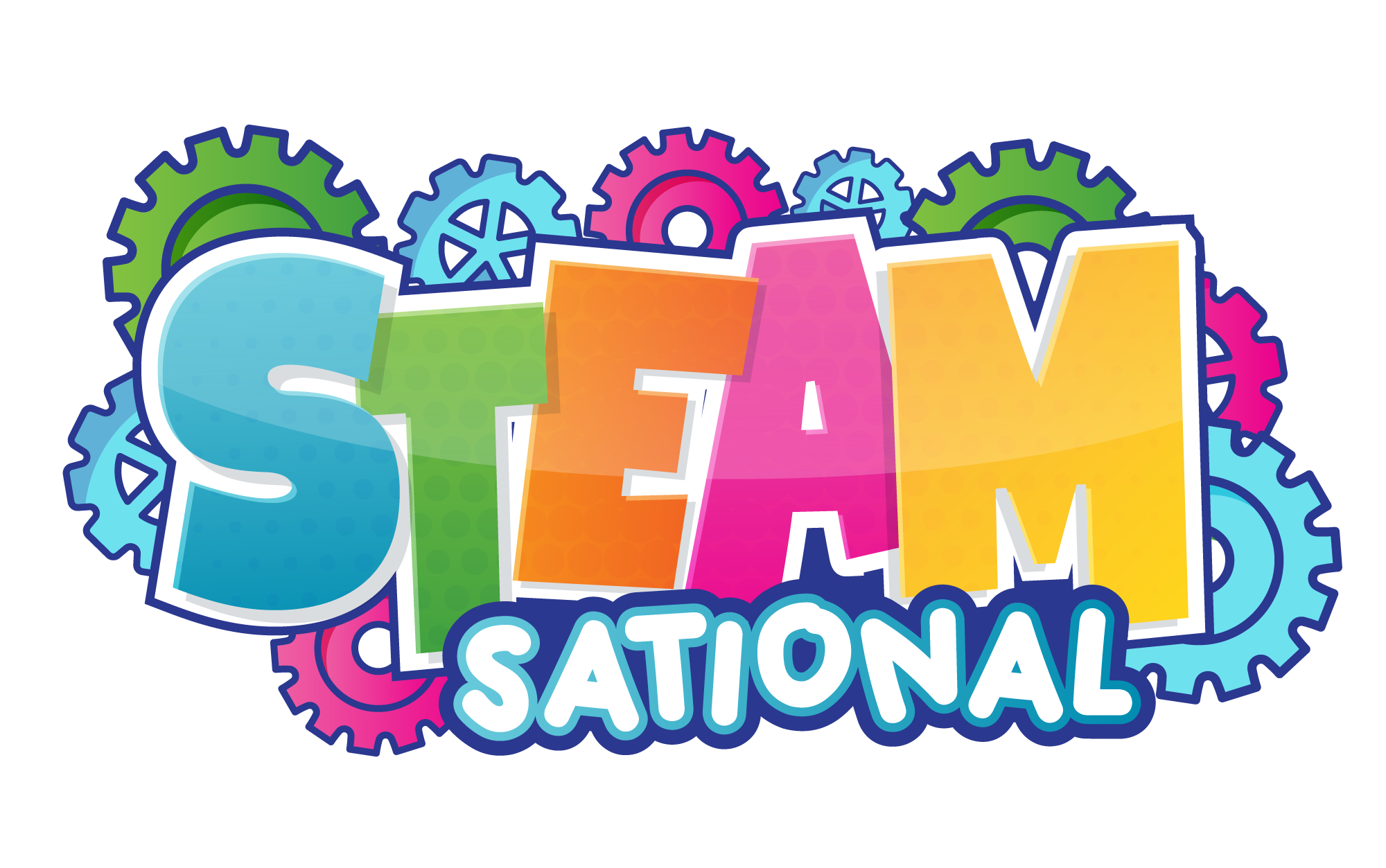
How to Do the Hot and Cold Water Density Experiment
Categories Science Experiments
One of my favorite things to do are STEM activities and ocean science experiments ! I love seeing the reaction on a child’s face when they see science work before their eyes.
A lot of science experiments take a long time, but not the hot and cold water density experiment !
In this temperature density experiment, kids will experience water density, color mixing, molecule science, and a whole lot more with just one experiment that takes less than 10 minutes to complete.
Try it out at home or in the classroom!
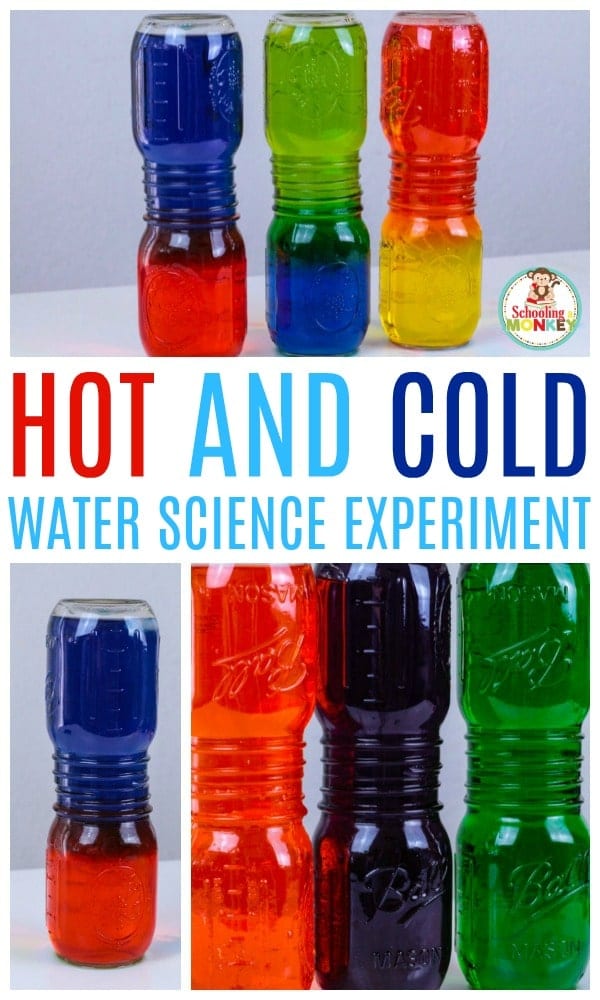
Hot and Cold Water Density Experiment
If you love doing quick science experiments that wow, try this amazing hot and cold water experiment.
Kids will ask to do this one over and over again!
Why STEM Activities are Important for Kids
Today, science experiments for kids are more important than ever. Science and technology are huge parts of our world today, and the future will be even more science and tech-focused.
Kids who aren’t immersed in the world of science and STEM exploration from a young age will be left behind their peers, and may struggle to find work in the fast-changing landscape of future careers.
Science experiments are usually basic, but they can help spark a love of science and discovery in a child that will follow them throughout their life.
The simple science experiment that a child does today may spark their desire to discover something that will change the world in the future.
Every day, young children are using science experiments to solve real-world problems in medicine and technology that have never been uncovered before.
And all these scientific discoveries start with a firm foundation in science and STEM.
The Scientific Method for Kids
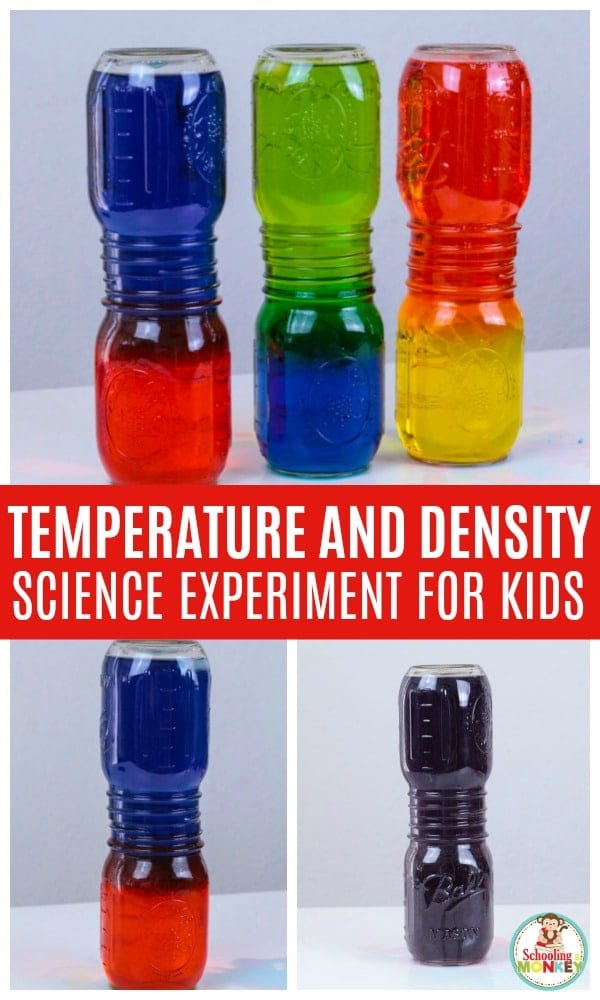
Every science experiment contains four elements:
Kids should start every science experiment with a question, even if that question is just “what will happen?”
A Hypothesis
Before doing any experiment, children should record what they believe will happen.
An Experiment
This is where the fun part comes into play. Test the hypothesis to determine if it answers the question fully.
A Recording and Analysis
As the test is completed, record what happened and analyze why.
Try different variables and try a new test to see if the original answer is confirmed or disproved.
Water Density Experiment Explanation
Here is the hot and cold water density experiment explanation.
The hot and cold water science experiment works because of the different density of hot and cold water.
Certain liquids are less dense than others. If you’ve ever made a density jar, it’s easy to see this in action.
But… water has the same density as other water, right? So why does it stay separated?
The secret is in the temperature of the water.
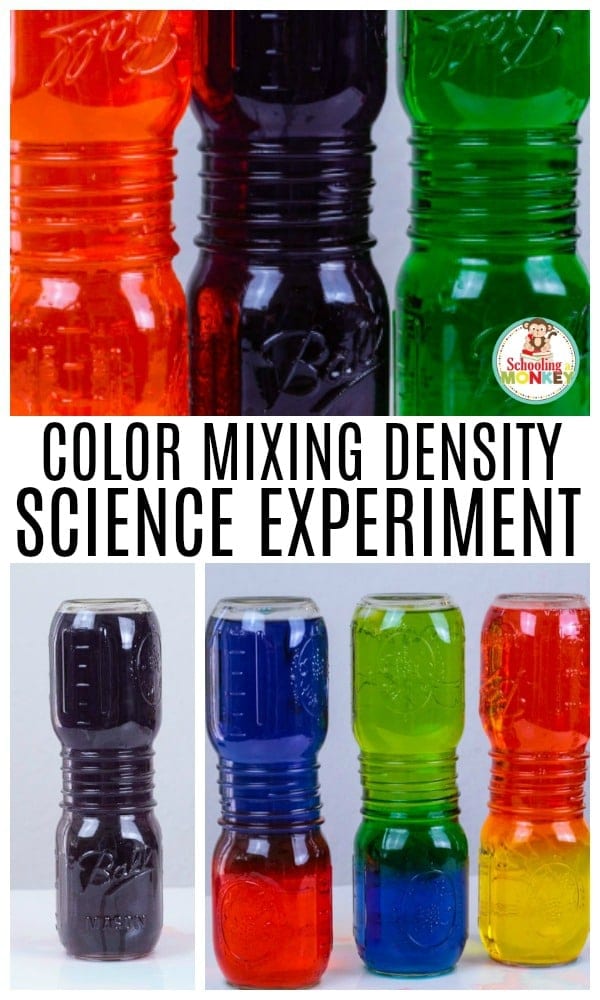
The molecules in hot water move faster than those in cold water. Hot water molecules bounce around and leave gaps. This makes hot water slightly less dense than cold water.
So when you put the cold water on the bottom, the denser cold water stays there.
But when you put the cold water on the top, heat molecules rise. So the colors mix right away.
Because you’re mixing primary colors, they mix into secondary colors when the hot water is on the bottom.
Supplies for the Temperature Density Experimemnt
Here are some essential supplies for the hot and cold water density experiment.
- Food coloring
- Cardstock paper
Our Favorite Water Science Kits
Here are some of our favorite water science kits that you can turn into ice science too!
- Water science kit for early elementary
- Water filtration science experiment
- Air and water power science kit
- Clean water science kit
- Water rocket kit
Water Density Experiment Set-Up
Before starting this experiment, you’ll need to laminate a small card slightly larger than the mouth of your mason jar.
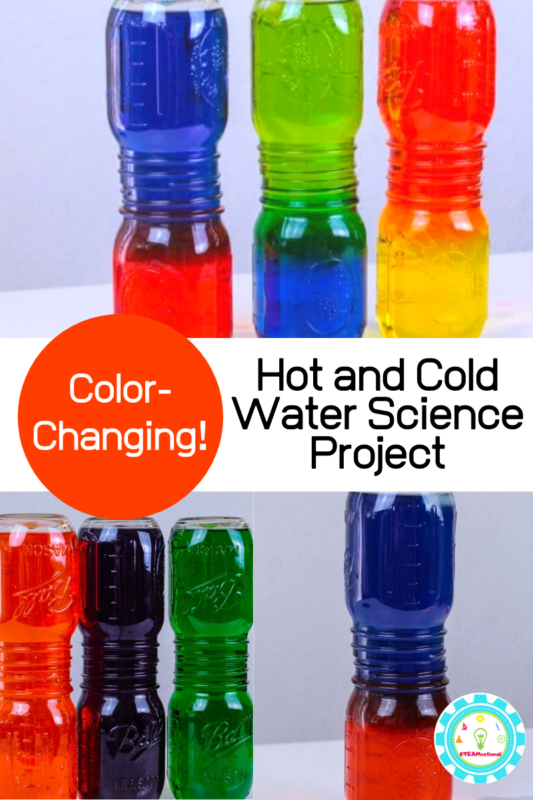
Boil a pot of hot water and fill a large pitcher with ice water.
Fill three jars all the way to the top with ice water.
Fill three more jars up to the top with hot water (but don’t make it so hot that you can’t touch the sides of the jar).
Dye one cold jar yellow, one blue, and one red. Repeat for the hot jars.
More Water Experiments for Kids
- How to Make Water Slime that Looks Just Like Fresh Water!
- Fortnite Slurp Drink Water Density Experiment
- How to Make an Instant Ice Tower
- Milk jug water wheel
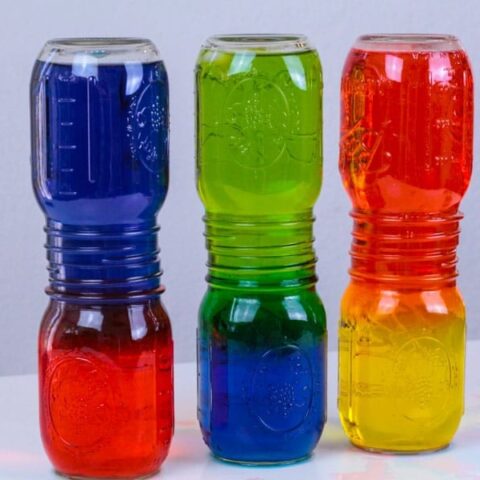
How to Do the Water Density Experiment
Learn how hot and cold water have different densities with this hands-on, colorful, and fun water science experiment! It's the perfect "wow" science experiment that gets strong reactions every time!
- Plastic mason jars
Instructions
First, do the experiment with the cold water on the bottom.
- Place the index card over the mouth of the hot water jar. Press slightly to make a seal.
- Flip the jar over and place it on top of the cold water jar (make sure it's a color combo that will make a secondary color).
- Line up the lip of the jars and carefully pull the card out. The water will stay separated!
- Repeat for the other four jars.
- Carefully grip the center of the jars and flip them. They will mix into secondary colors right away!
- Because cold water is denser than hot water, the colors do not mix until gravity pulls the cold water down into the hot water.
If you don't want the mess risk of flipping the jars, you can simply put the hot water jar on the top and use the index card over the cold water. Then, when you move the card out of the way the colors will mix and you won't have to flip any jars.
Recommended Products
As an Amazon Associate and member of other affiliate programs, I earn from qualifying purchases.

Want to save this project?
Please leave a comment on the blog or share a photo on Instagram
Share this project with a friend!
- Grades 6-12
- School Leaders
Give Students a Voice in This Digital Storytelling Competition!
Every product is independently selected by our team of teacher-reviewers and editors. Things you buy through our links may earn us a commission.
50 Fantastic 5th Grade Science Projects, Experiments, and Activities
For the classroom or science fair.
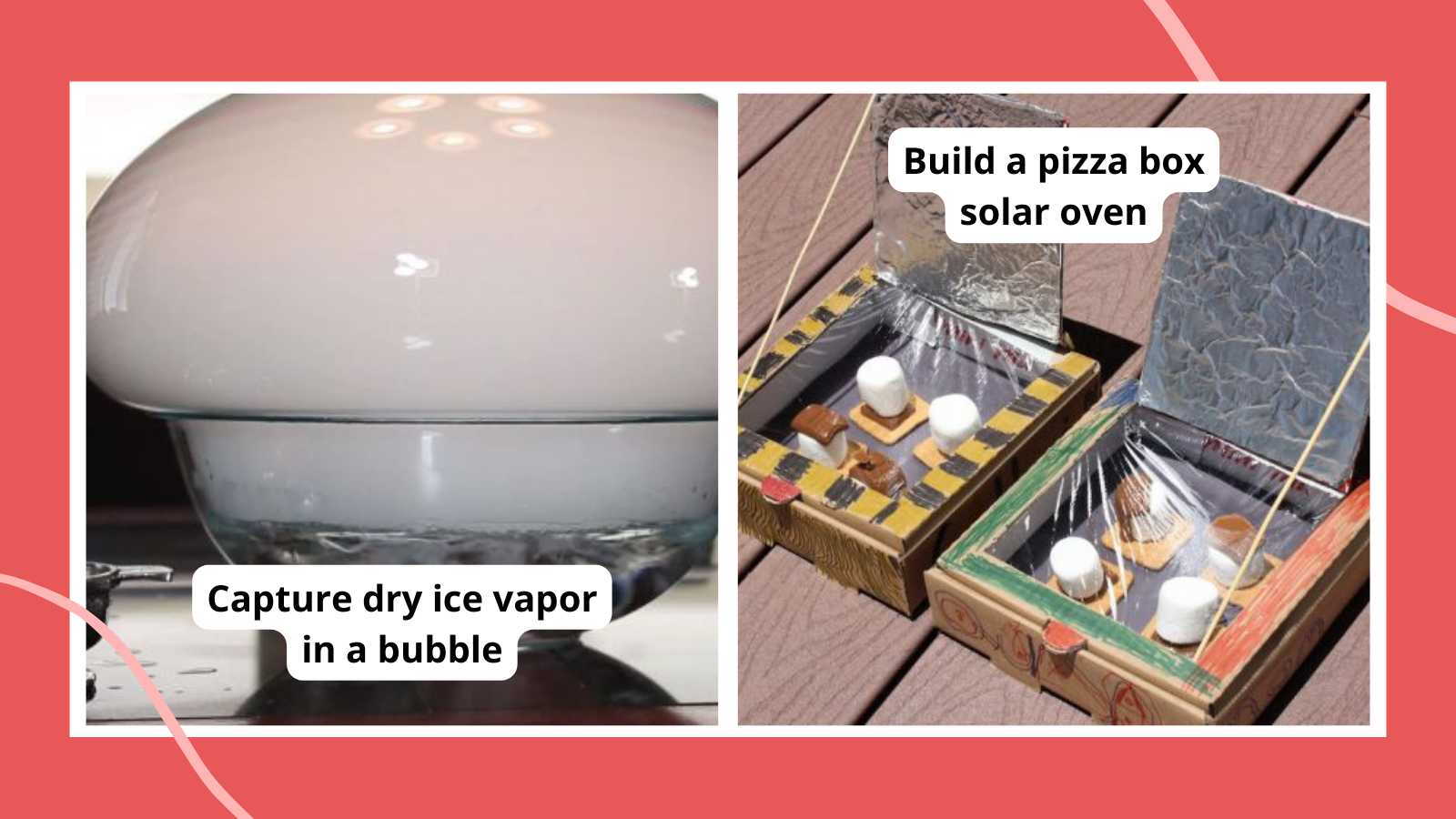
There’s something so fascinating about hands-on science experiments and projects. They make learning so meaningful and so much fun! These 5th grade science projects help kids explore biology, physics, chemistry, and a whole lot more. Try one at the 5th grade science fair, or use a few to liven up your lesson plans.
To make things even easier, we’ve rated every one of these 5th grade science projects based on difficulty and materials:
Difficulty:
- Easy: Low or no-prep experiments you can do pretty much anytime
- Medium: These take a little more setup or a longer time to complete
- Advanced: Experiments like these take a fairly big commitment of time or effort
- Basic: Simple items you probably already have around the house
- Medium: Items that you might not already have but are easy to get your hands on
- Advanced: These require specialized or more expensive supplies to complete
5th Grade Science Fair Projects
Stem challenge 5th grade science projects, 5th grade matter and energy science activities, more 5th grade science projects and activities.
Choosing a science fair project means finding a subject that really interests you and coming up with a unique question to answer. Use some of these 5th grade science fair project ideas to create a cool experiment all your own.
Stop soil erosion with plants
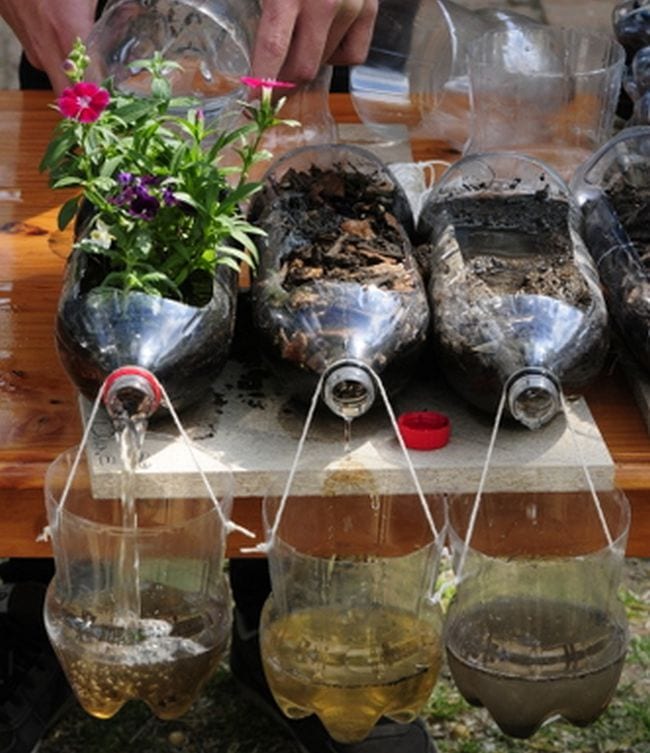
Difficulty: Medium / Materials: Medium
Soil erosion is a serious problem that can lead to natural disasters like landslides as well as causing problems for farmers, who lose valuable topsoil. Try this experiment to learn how plants help keep soil in place naturally, and change up the variables like soil composition or types of plants.
Learn more: Soil Erosion Experiment at Life Is a Garden
Blow square bubbles
Difficulty: Medium / Materials: Medium ADVERTISEMENT
Bubble science experiments are always a hit! In this one, kids construct a device to see if they can blow a square bubble instead of a round one.
Discover the delights of decomposition
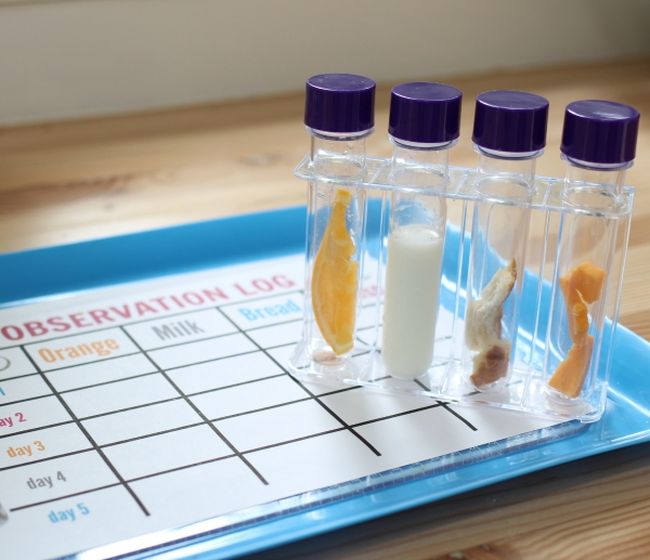
Difficulty: Easy / Materials: Medium
This is a good chance to apply the scientific method and practice your observation skills, using only basic kitchen supplies. Ask the question: “Which food will rot (decompose) the fastest?” Have students hypothesize, observe, and then report their findings. Get a printable observation sheet at the link below.
Learn more: Food Decomposition at No Time for Flash Cards
Mix up some magic sand
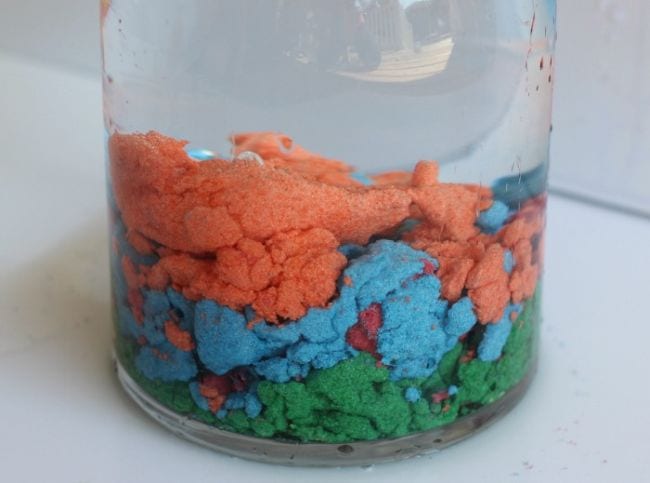
What if you could make sand that was “afraid” of water? This 5th grade science experiment uses waterproofing spray to create you-gotta-see-it-to-believe-it hydrophobic sand.
Learn more: Hydrophobic Sand at Teaching Mama
Make your own bouncy balls
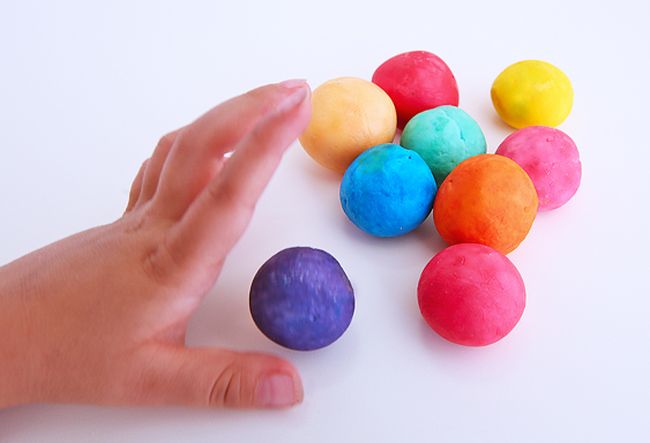
Students learn about polymers as they mix borax with cornstarch, glue, and water in this playful experiment. Experiment with size, shape, and ingredients to see which work best.
Learn more: DIY Bouncy Balls at Babble Dabble Do
Study water filtration
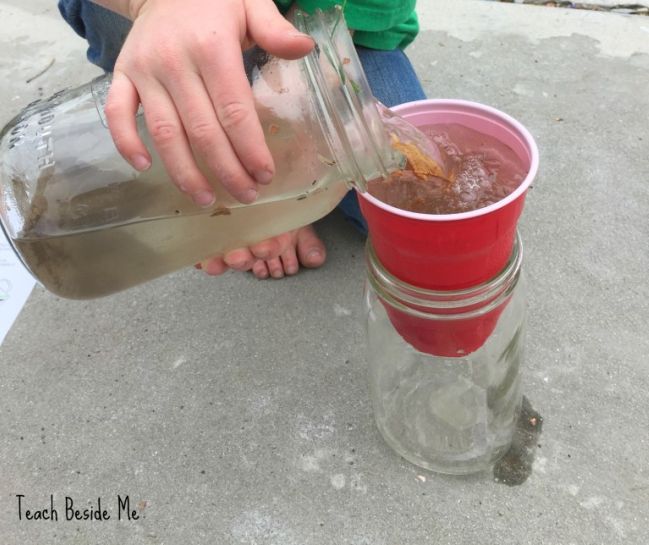
Difficulty: Easy / Materials: Basic
See the process of water purification firsthand. Layer coffee filters, sand, and gravel in the bottom of an empty cup punched with holes. Place the cup in an empty jar, pour in dirty water, and watch what happens. Mix up the variables, and you’ve got a cool 5th grade science fair project.
Learn more: Water Purification at Teach Beside Me
Find out if a dog’s mouth is cleaner than a human’s

Settle an age-old debate with this 5th grade science fair project. Collect saliva from both humans and canines with cotton swabs and place each sample in labeled petri dishes. Check the bacterial colonies in each and compare the results.
Learn more: Dog’s Mouth Project at Sciencing
Explore basic genetics

Send your students on a quest to find out more about their genes and inherited traits. The link below includes a printable chart they can use to learn about recessive and dominant genes.
Learn more: Inherited Traits at Education.com
Design a biosphere
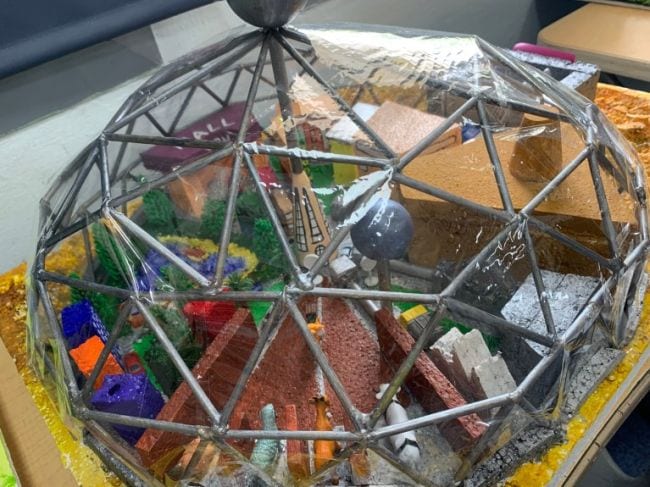
This project really brings out kids’ creativity and helps them understand that everything in a biosphere is really part of one big whole. You’ll be overwhelmed by what they come up with!
Learn more: Biosphere Project at Laney Lee
Measure heat capacity of different liquids
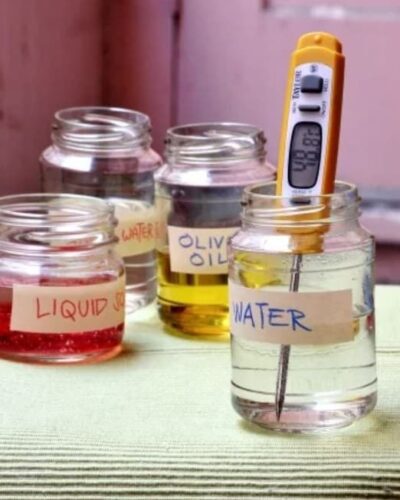
Your students will venture into the world of chemistry with this experiment that tests the heat capacity of different liquids, such as salt water, olive oil, and liquid soap, using a hot plate . They’ll incorporate math into their experiment when they plot their results!
Learn more: Heat Capacity at Education.com
A good STEM challenge can spark a terrific science fair project too. These also make terrific classroom activities for 5th grade science students.
Assemble an automatic water fountain
Water fountains were around long before humans harnessed the power of electricity to make pumps. Learn how they worked with this STEM challenge science project for 5th grade.
Race down a LEGO zip line
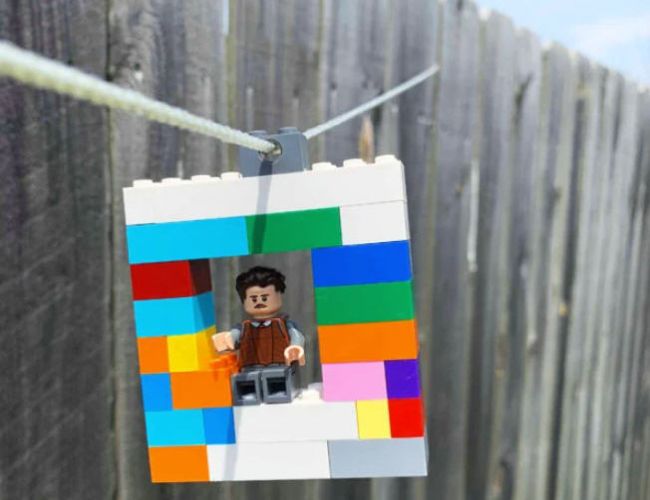
Every kid loves LEGO bricks, so incorporate them into your 5th grade science activities! Challenge kids to design and build their own zip line. You can set the parameters, like distance and slope, then let students get to work.
Learn more: Zipline at 123 Homeschool 4 Me
Slow your roll
Ball-run challenges are always fun, but this one has a twist. Your goal is to build a run that gets the ball to the bottom taking the longest time possible! This requires kids to think about friction, slopes, and other creative features.
Fly clothespin airplanes
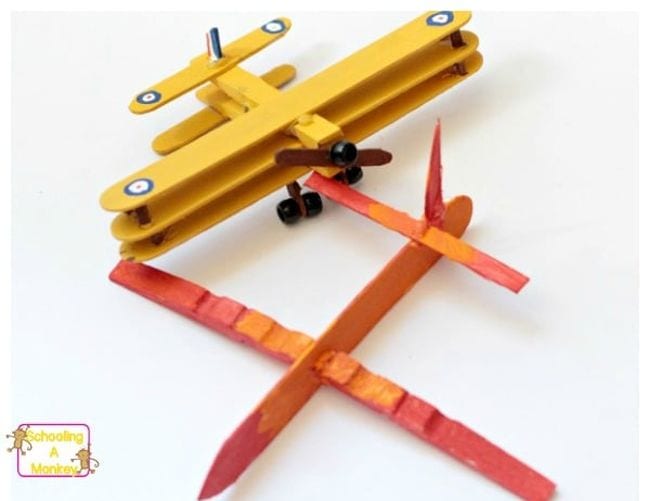
Put your 5th grade science students’ engineering skills to the test. Provide them with clothespins and wood craft sticks , and challenge them to build a realistic airplane. Bonus points if it can actually fly!
Learn more: Clothespin Airplane at STEAMsational
Spin a candle-powered pinwheel
Prove that hot air rises by using candles to spin a homemade pinwheel. Then experiment to see how the number of candles affects the spinning speed. (As always, make sure kids use fire under safe conditions.)
Set off a chain reaction
Learn about potential and kinetic energy when you try this cool 5th grade science experiment. All you need are wood craft sticks and a bit of patience.
Bounce on a trampoline
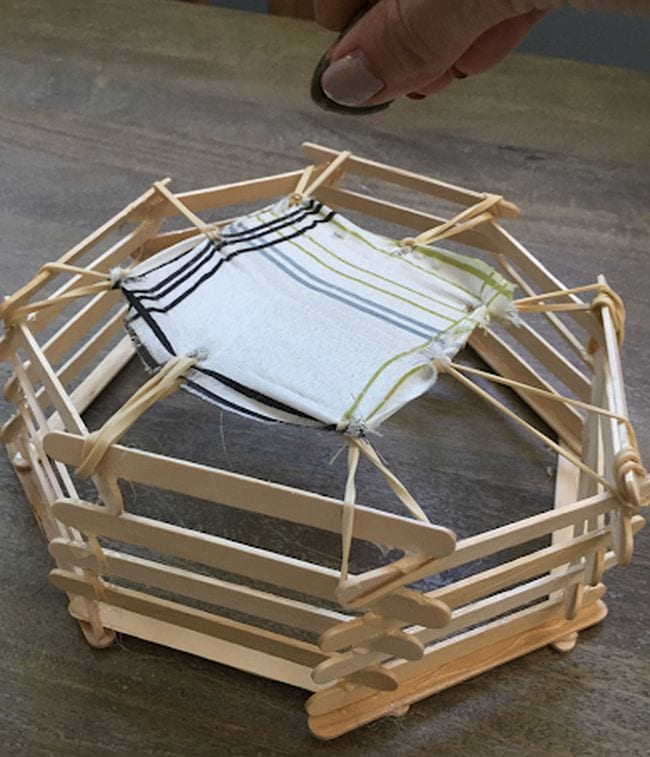
Kids love bouncing on trampolines, but can they build one themselves? Find out with this totally fun STEM challenge. Plus, check out more 5th grade STEM challenges here.
Learn more: Trampoline STEM Challenge at Student Savvy
Build a solar oven
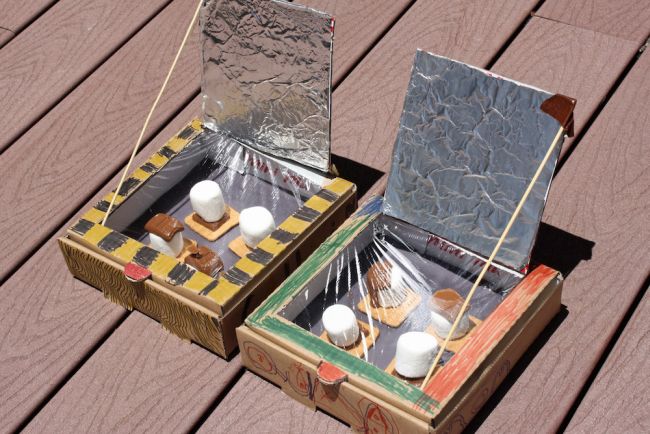
Learn about the value of solar energy by building an oven that cooks food without electricity. Enjoy your tasty treats while discussing ways we can harness the energy of the sun and why alternative energy sources are important. ( Love edible science projects? Get more ideas here. )
Learn more: DIY Solar Oven S’mores at Desert Chica
Launch your own bottle rocket
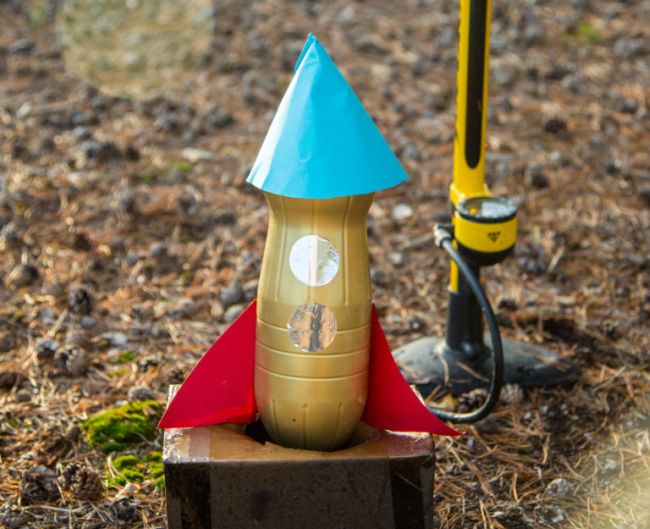
Blast off with a few supplies and a little help from the laws of motion. Encourage kids to design and decorate their rockets first and see which one can fly the highest!
Learn more: Bottle Rocket at Science Sparks
Peer through a cardboard microscope
Microscopes can be pricey, so make your own at home! This is the kind of 5th grade science fair project that will really wow the judges.
Build a snack machine
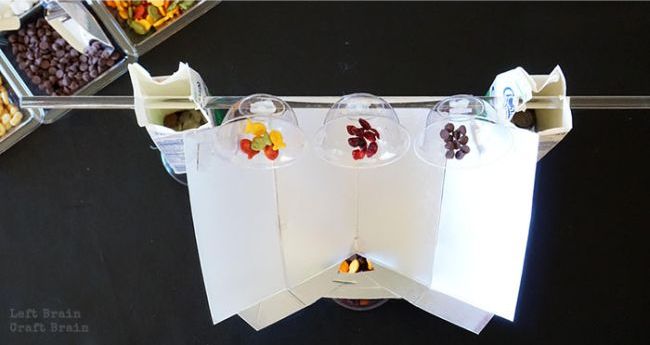
Incorporate everything students learn about simple machines into one project when you challenge them to build a snack machine! Using basic supplies, they’ll need to design and construct a machine that delivers snacks from one location to another. ( Get more candy experiments here. )
Learn more: Snack Machine Challenge at Left Brain Craft Brain
Use rubber bands to sound out acoustics
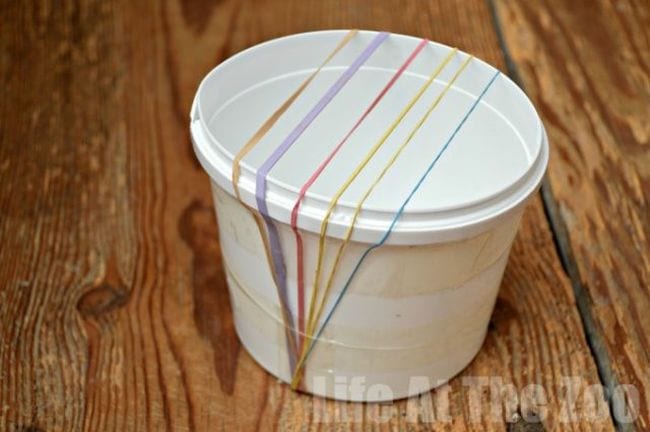
Explore the ways that sound waves are affected by what’s around them using a simple rubber band “guitar.” (Your students will absolutely love playing with these!)
Learn more: Rubber Band Guitar at Science Sparks
Assemble Archimedes’ screw
Difficulty: Medium / Materials: Basic
It’s amazing how often science looks like magic—until you understand the principles behind it. Such is the case with the simple pump known as Archimedes’ screw. It’s easy to build your own and makes for a cool 5th grade science fair project.
Recycle newspaper into an engineering challenge
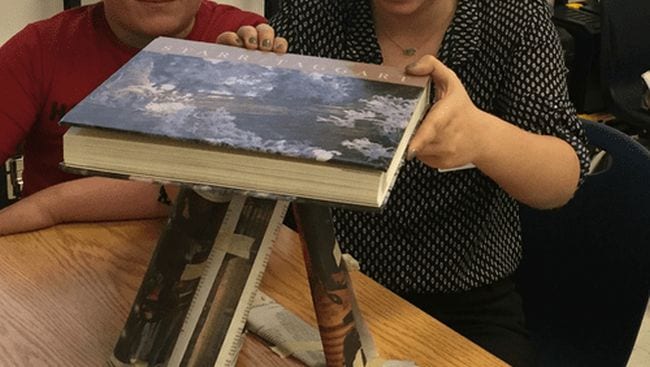
It’s amazing how a stack of newspapers can spark such creative engineering. Challenge students to build a tower, support a book, or even build a chair using only newspaper and tape.
Learn more: Newspaper Tower at STEM Activities for Kids
Construct a sturdy bridge
To design a safe bridge that meets the needs of the community, engineers must understand the capabilities and limitations of the bridge. This project is great for budding 5th grade engineers as they simulate constructing a bridge that serves its purpose and keeps community members safe.
Every 5th grade science curriculum is different, but many include some common concepts. Learn about the states of matter, matter and its interactions, and energy science with these neat 5th grade activities.
Model the states of matter
Create simple models to show the arrangement of molecules in solids, liquids, and gasses. Ping-Pong balls are perfect for this. ( Find more states of matter activities here. )
Drink root beer floats
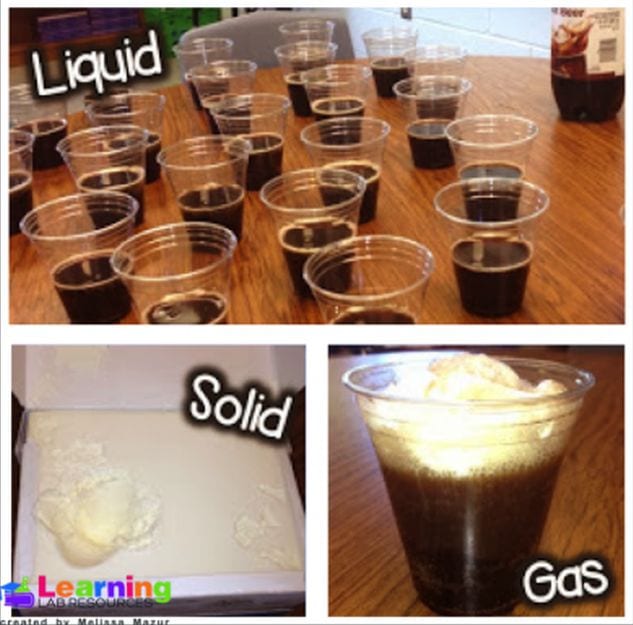
This is our favorite way to learn about the various states of matter! Treat time becomes a learning lesson with this 5th grade science matter activity.
Learn more: Teaching Matter With Root Beer Floats at Learning Lab Resources
Fill a bubble with dry ice vapor
Discover the science of sublimation by turning dry ice from a solid directly into a gas. Then play around with surface tension as the resulting vapor fills a giant bubble. This one is so cool to see in action!
Discover density with hot and cold water

There are a lot of cool science experiments you can do with density. This one is extremely simple, involving only hot and cold water and food coloring.
Learn more: Hot and Cold Water Density at STEAMsational
Learn to layer liquids
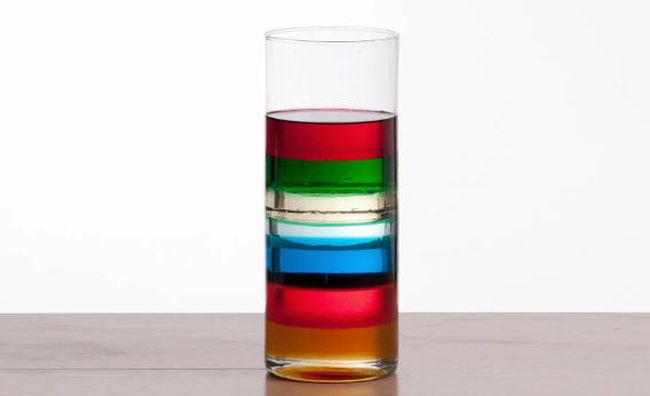
This density demo is a little more complicated than other science projects, but the effects are spectacular. Slowly layer liquids like honey, dish soap, water, and rubbing alcohol in a glass. Your 5th grade science students will be amazed when the liquids float one on top of the other like magic (except it is really science).
Learn more: Liquid Density at Wonder How To
Light(ning) it up indoors
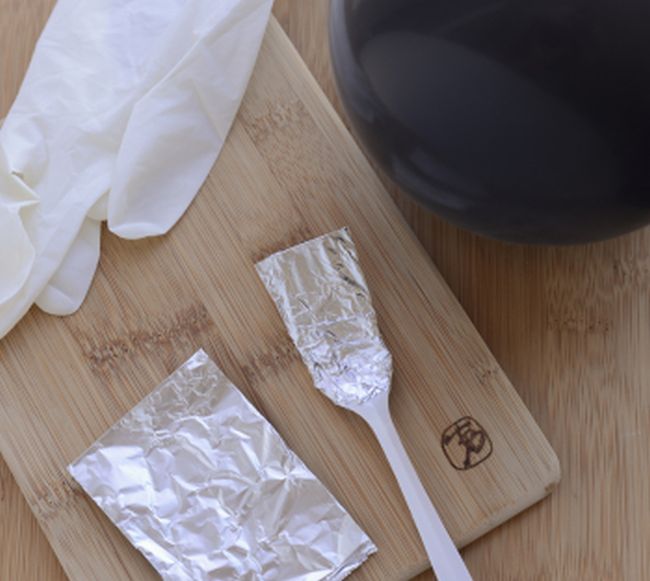
On a cool, low-humidity day, use a foil-covered fork and a balloon to create a “lightning storm” in your classroom. Turn down the lights to give students a better view of the static electricity you’re creating.
Learn more: Indoor Lightning at Education.com
Create convection currents
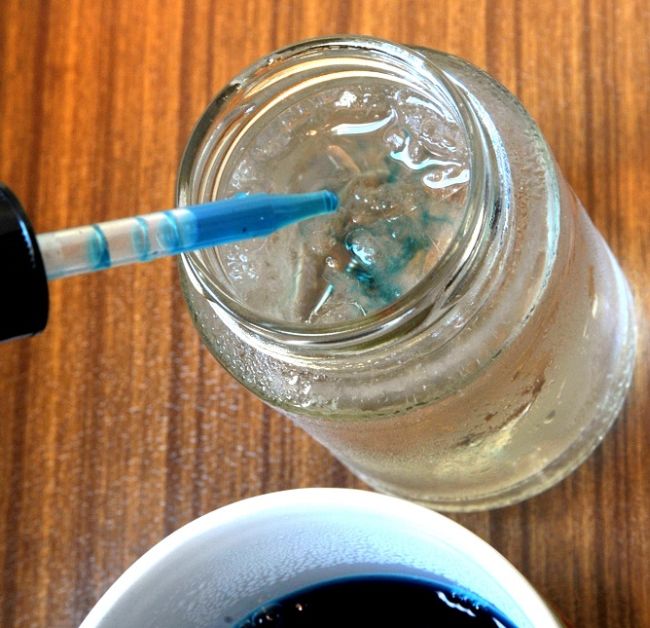
This easy experiment uses hot and cold liquids and some food coloring to explore the thermal and kinetic energy that creates convection currents. Take things a step further and research how convection currents work in large bodies of water, like oceans.
Learn more: Heat Convection at Education.com
Sink or swim with soda cans
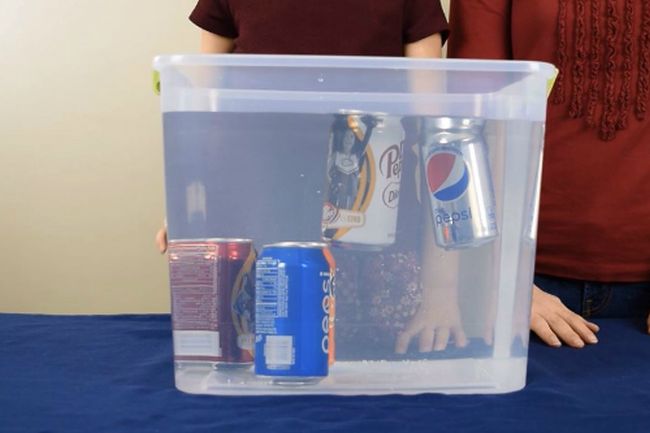
Here’s another easy density experiment. Place unopened cans of regular and diet soda into a bin of water to see which float and which sink. The differences are due to the use of sugar and artificial sweeteners.
Learn more: Sink or Swim at Cool Science Experiments HQ
Find out if water conducts electricity
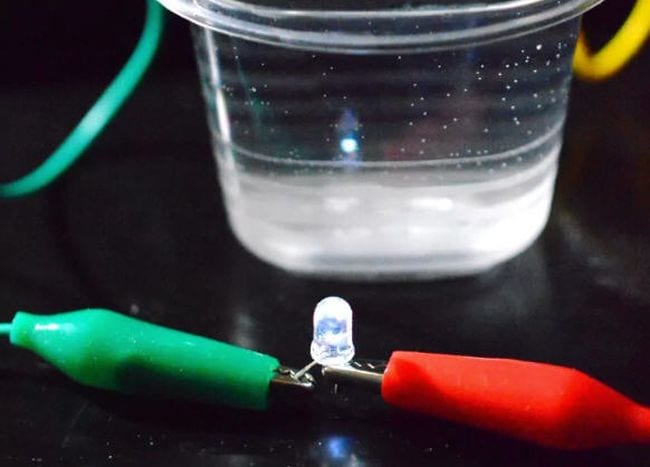
We always tell kids to get out of the water as a storm approaches. This 5th grade science project helps explain why. (Conductivity vs. non-conductivity is one of the properties of matter too.)
Learn more: Electricity and Water at Rookie Parenting
Blow up a balloon—without blowing
This is the classic science experiment that helps you teach the reactions between acids and bases, plus what happens when you mix different substances together. Fill a bottle with vinegar and a balloon with baking soda. Fit the balloon over the top, shake the baking soda down into the vinegar, and watch the balloon inflate.
Learn more: Balloon Experiments
Use these hands-on science activities to spice up your lesson plans or as enrichment projects for science-loving kids to try at home.
Erupt a baking soda volcano
Need a 5th grade science fair project? Go with a classic: the volcano ! This one’s made from salt dough, which is easy to work with and inexpensive to make.
Learn more: Baking Soda Volcano Experiment (With Free Printable Student Recording Sheet)
Peel an orange to understand plate tectonics
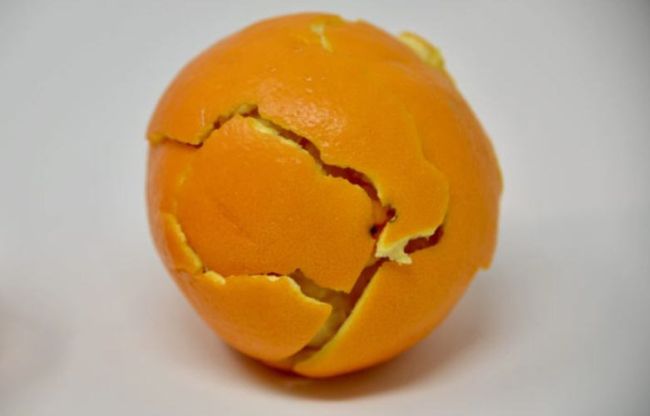
If students are learning earth science, use an orange to make plate tectonics easier to understand. Peel it, then reassemble it and look at the pieces as plates floating on the Earth’s mantle.
Learn more: Orange Tectonics at Science Sparks
Discover the strength of eggshells
We think of eggshells as very fragile, but their shape makes them surprisingly strong. Try this experiment to learn why arches are such a useful shape in architecture.
Demonstrate the “magic” leakproof bag
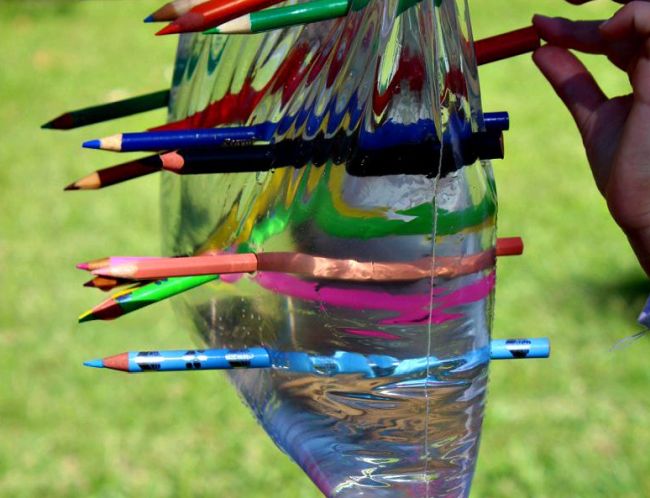
So simple and so amazing! All you need is a zip-top plastic bag, sharp pencils, and some water to blow your students’ minds. Once they’re suitably impressed, teach them how the “trick” works by explaining the chemistry of polymers.
Learn more: Magic Leakproof Bag at Paging Fun Mums
Explore the science of glow sticks
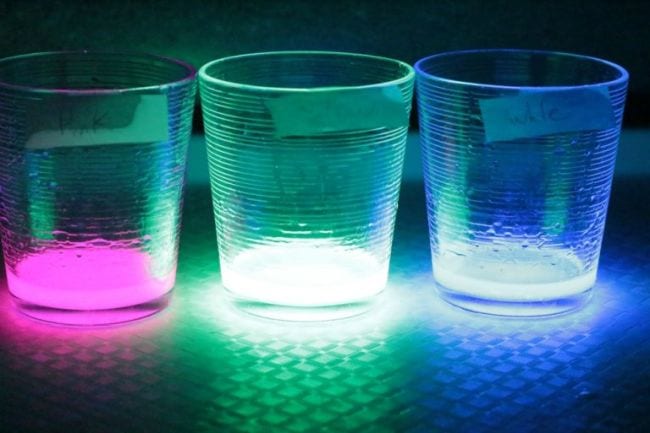
Glow sticks are always a big hit with kids, so they’ll have a terrific time learning about the chemical reactions that make glow sticks work.
Learn more: Glow Stick Science Experiment at A Dab of Glue Will Do
Grow crystal snowflakes
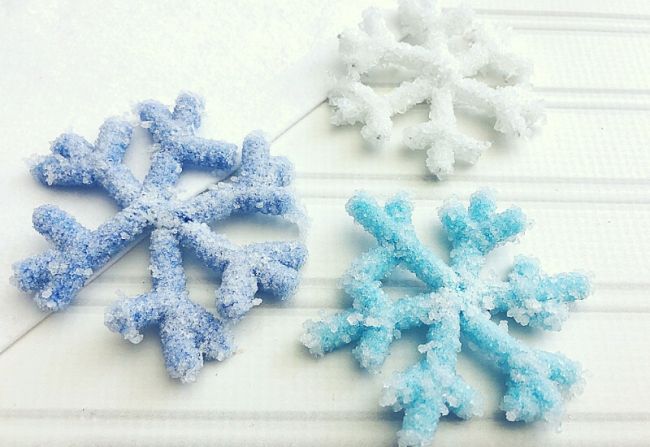
Kids love crystal projects, and this one results in winter decorations for your classroom. Your students will learn about supersaturated solutions and crystallization. ( See more winter science activities here. )
Learn more: Crystal Snowflakes at Little Bins for Little Hands
Escape from quicksand
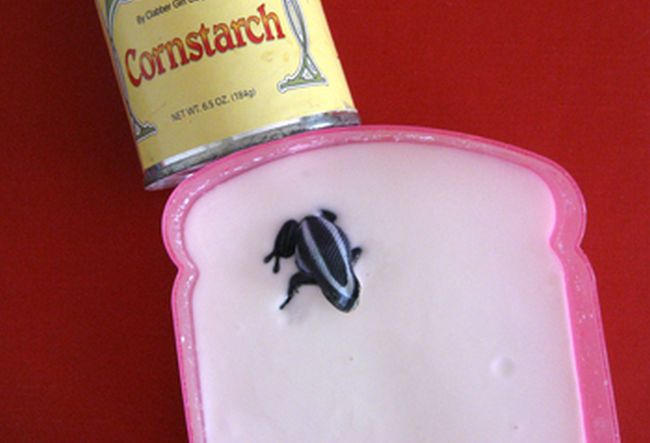
Dive deep into the science of quicksand and learn about saturation and friction along the way. You’ll create a small “quicksand” pool from cornstarch and water, then experiment to find out the best ways to escape.
Learn more: Quicksand Experiment at Education.com
Watch the heart beat with marshmallows
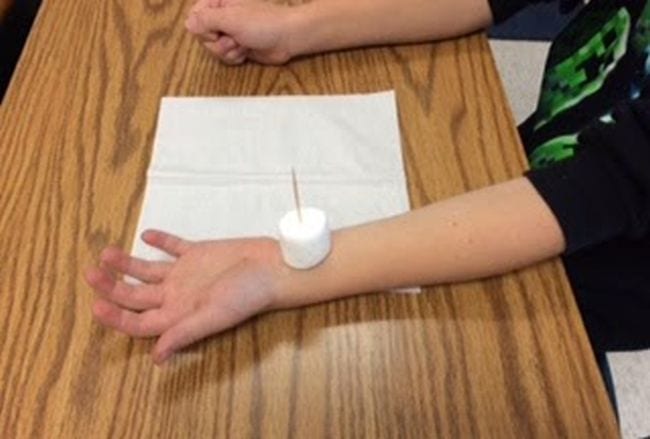
If you can get your 5th grade science class to quiet down enough for this one, they might be able to see a marshmallow jump with each beat of their hearts!
Learn more: Heartbeat Marshmallows at Growing Grade by Grade
Make a foil bug walk on water
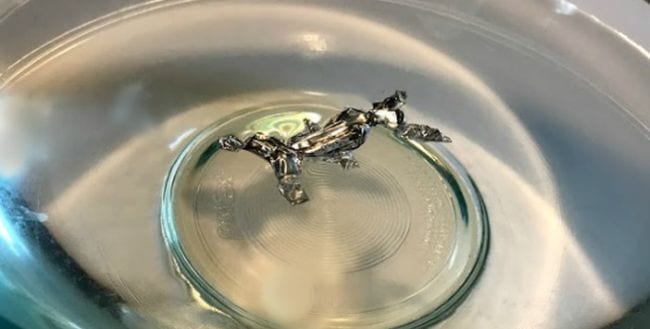
Surface tension allows water striders to dance across the surface of the water. Re-create this scientific phenomenon with little “bugs” made of aluminum foil.
Learn more: Foil Water Strider at The Homeschool Scientist
Find out how bile breaks down fat
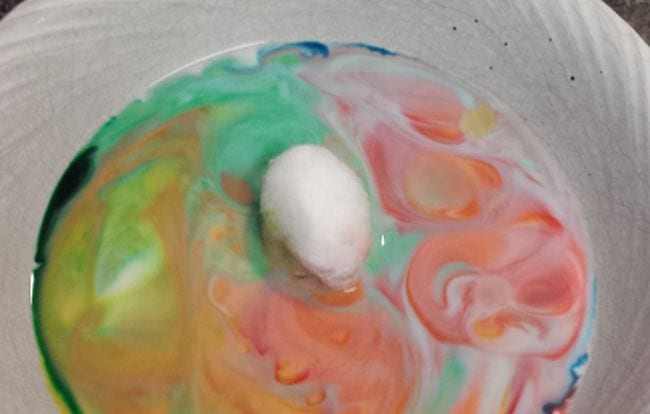
Learning about the digestive system? This 5th grade science demo explores the purpose of the bile produced by the liver, which breaks down fat.
Learn more: Bile Experiment at Simple Southern
Construct a homemade lava lamp
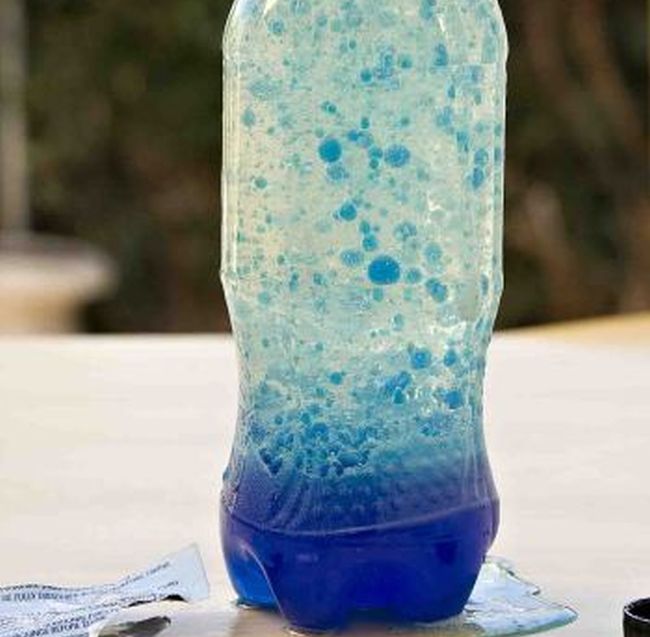
This 1970s trend is back—as a 5th grade science project! Learn about acids and bases while putting together a totally groovy lava lamp.
Learn more: Homemade Lava Lamp at Education.com
Investigate osmosis with gummy bears
Gummy bears are not only tasty, but they can also help teach your 5th graders about the concepts of osmosis and equilibrium as well as solvents and solute.
Replicate a sunset
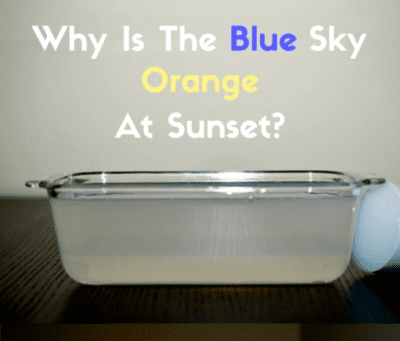
With just water, milk powder, a flashlight, and a glass dish, your 5th graders will investigate why the sky appears to change colors as the sun sets.
Learn more: Sunset Sky at Rookie Parenting
Defy gravity with floating water
This one might cause a bit of a mess, but it’s only water, and it’s all in the name of your students discovering air pressure. All you’ll need is a cup, index card, water, and crossed fingers that your classroom doesn’t become a puddle!
Model constellations

Space delights students of all ages. The mystery and mystique is intriguing, and creating a constellation out of pipe cleaners is a fun STEM activity to explore the night sky.
Learn more: Constellations Model at STEAM Powered Family
Continue the STEM learning with these 5th Grade Math Games for Teaching Fractions, Decimals, and More .
Plus, sign up for our newsletters to get all the latest teaching tips and ideas straight to your inbox..
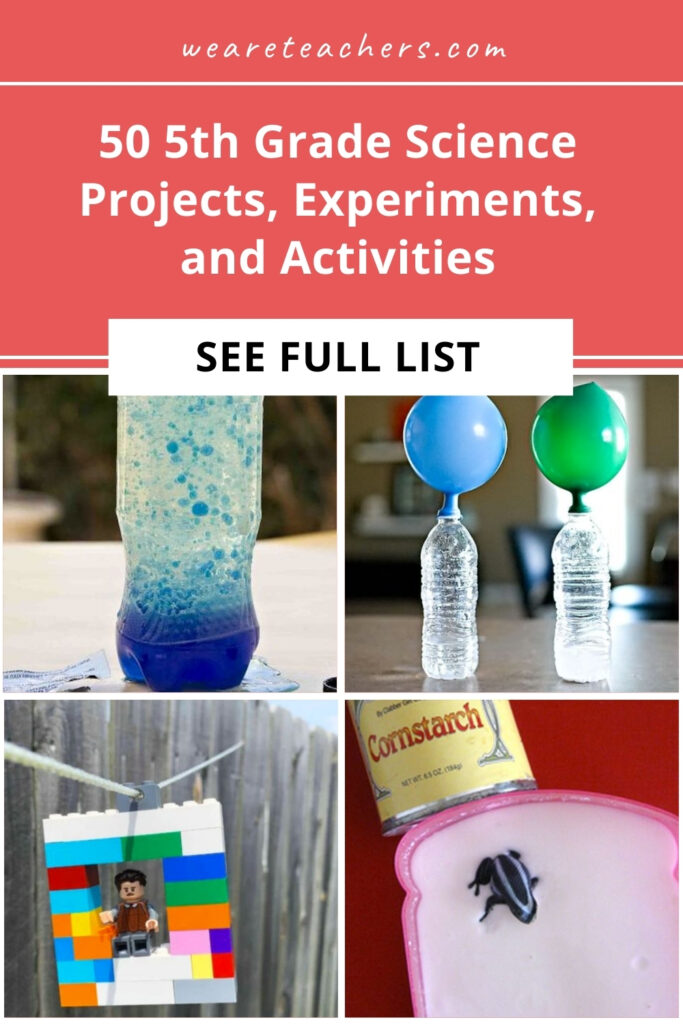
You Might Also Like
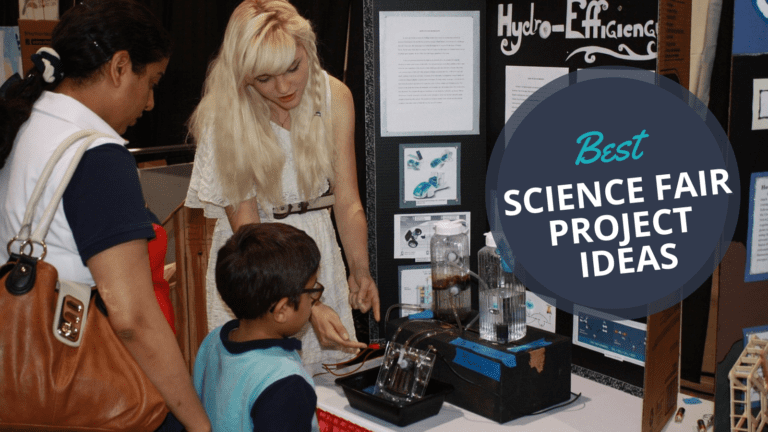
The Big List of Science Fair Project Ideas, Resources, and More
Options for every age, interest, and skill level! Continue Reading
Copyright © 2024. All rights reserved. 5335 Gate Parkway, Jacksonville, FL 32256
Get Your ALL ACCESS Shop Pass here →
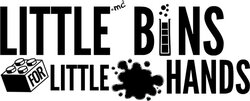
20 Fun and Easy 5-Minute Science Experiments for Kids
Let’s go for the instant wow with fantastic, mind-blowing experiments! These 5 minute science experiments are a fantastic way to introduce science concepts to kids of all ages. Each activity is easy to set up with everyday materials and perfect for a quick mini-lesson!

5 Minute Easy Science Experiments
Below, you’ll find 20 fun, 5 minute science experiments ideal for grades K-5 . They’re simple enough for younger kids but can be adapted for older kids, making them great for mixed-age groups. Plus, I’ve added tips to make science with kids even easier! These might seem like magic tricks, but plenty of fantastic science is involved.
💡 For younger kids (kindergarten to 2nd grade) , the focus should be on making the activities simple, fun, and visually engaging while introducing basic scientific concepts in easy-to-understand terms.
💡 For older kids (3rd to 5th grade) , you can add science vocabulary surrounding the explored concept, such as surface tension, reaction rates, density, and solubility. Each of the experiments below will further explain the science behind the experiment.
1. Magic Milk Experiment
Grade Level : K-5 Pour whole milk into a shallow dish and add a few drops of food coloring near the center. Dip a cotton swab in dish soap and touch it to the milk’s surface. Watch as the colors swirl and dance around! This experiment introduces the concept of surface tension and the role of fat molecules in milk.
2. Balloon and Static Electricity
Grade Level : K-3 Rub a balloon or wool on your hair, then use the static charge to move small paper pieces or bend a stream of water. It’s a simple way to introduce static electricity and how charges interact.
3. Dancing Raisins
Grade Level : K-3 Drop raisins into a glass of soda and watch them “dance” as carbon dioxide bubbles lift them to the surface. This fun experiment introduces buoyancy and gas behavior.
4. Baking Soda and Vinegar Reaction
Grade Level : K-5 Mix baking soda and vinegar for an instant fizzing reaction! It’s a great introduction to chemical reactions between acids and bases; kids love the bubbly effect.
5. Paper Towel Chromatography
Grade Level : 2-5 Draw circles with washable markers near the bottom of a paper towel, dip the edge in water, and watch as the colors separate. It’s an easy way to explore how different molecules move through a material.
6. Skittles Rainbow
Grade Level : K-3 Arrange Skittles in a circle on a plate and pour warm water in the middle. Watch as the colors dissolve into a beautiful rainbow. This is a simple way to show how solubility works.
7. Lava Lamp Experiment
Grade Level : 3-5 Mix oil, water, food coloring, and an effervescent tablet in a glass to create a bubbling lava lamp effect. This experiment introduces the concept of immiscible liquids and gas formation.
8. Invisible Ink
Grade Level : 3-5 Write secret messages with lemon juice, then reveal them by holding the paper near a light bulb. This fun activity introduces how heat can cause chemical changes.
9. Soap-Powered Boat
Grade Level : K-3 Cut a small boat shape from cardstock, place it on water, and add a drop of dish soap. Watch it zoom across the surface as soap reduces the water’s surface tension.
10. Pepper and Water Trick
Grade Level : K-5 Sprinkle pepper on water, then dip a soap-covered finger into it. The pepper scatters as the soap breaks the surface tension. This is a fun way to show how molecules behave in water.

11. Blowing Up a Balloon with Baking Soda and Vinegar
Grade Level : K-5 Using a bottle, baking soda, vinegar, and a balloon, show how the chemical reaction creates gas that fills the balloon. This is an easy and exciting way to visualize gas production during a reaction.
12. Screaming Balloon
Grade Level: 2-5 Make a balloon scream! Blow up a balloon and place a hex nut inside, then spin the balloon in a circular motion. The nut makes a “screaming” noise as it vibrates inside the balloon, introducing kids to sound waves and vibration. This experiment is a quick and fun way to explore how sound is created by movement and interaction with objects.
13. Penny Drop Water Experiment
Grade Level : 2-5 Using a penny, a dropper, and water, see how many drops of water can fit on a penny before spilling over. This simple experiment demonstrates surface tension and cohesion.
14. Rubber Band Sound Experiment
Grade Level : K-3 Stretch rubber bands around an empty tissue box and pluck them to make different sounds. Discuss how the tension of the bands affects the pitch, introducing the basics of sound waves.
15. Cloud in a Jar
Grade Level : 3-5 Fill a jar with hot water, then spray hairspray inside and cover it with ice cubes. Watch as a cloud forms inside the jar. This activity introduces kids to the concept of condensation and how clouds form.
16. Toothpick Star Experiment
Grade Level : 1-5 Bend toothpicks and arrange them into a star shape. Add a few drops of water to the center, and watch the star “magically” open! For younger kids, focus on the fun shape change, and for older students, explain how the water moves through the toothpicks by surface tension , making the star expand.
17. Density Jar Column
Grade Level: 3-5 Pour layers of different liquids, such as honey, dish soap, water, oil, and rubbing alcohol, into a clear glass, being careful not to mix them. Watch as each liquid forms a distinct layer based on its density. Kids can then drop small objects, like beads, into the column to see which layers they float or sink in.
18. Egg in a Bottle
Grade Level: 3-5 This classic experiment demonstrates air pressure and how temperature changes can create a vacuum effect, drawing the egg into the bottle.
19. Homemade Slime
Grade Level: K-5 This hands-on experiment demonstrates how chemical bonds form when ingredients react to create a stretchy, non-Newtonian substance. Kids can explore how adding more or less saline solution affects the slime’s texture, providing a fun introduction to polymers and chemical reactions
20: Water Refraction Experiment
Grade Level: K-5 This simple experiment introduces kids to the concept of refraction—how light bends as it passes through water. For older students, you can discuss how light changes speed when it moves from one medium (air) to another (water), creating the illusion of a reversed image.

Tips for Doing Science with Kids:
💡 Want to Do More than 5 Minutes? Add in the scientific method , choose variables , and create a hypothesis .
Printable Science Projects For Kids
If you’re looking to grab all of our printable science projects in one convenient place plus exclusive worksheets and bonuses like a STEAM Project pack, our Science Project Pack is what you need! Over 300+ Pages!
- Bonus Quick Grab Packs for Biology, Earth Science, Chemistry, and Physics
- 90+ classic science activities with journal pages, supply lists, set up and process, and science information. NEW! Activity-specific observation pages!
- Best science practices posters and our original science method process folders for extra alternatives!
- Be a Collector activities pack introduces kids to the world of making collections through the eyes of a scientist. What will they collect first?
- Know the Words Science vocabulary pack includes flashcards, crosswords, and word searches that illuminate keywords in the experiments!
- My science journal writing prompts explore what it means to be a scientist!
- Bonus STEAM Project Pack: Art meets science with doable projects!

Leave a Reply
Your email address will not be published. Required fields are marked *

Subscribe to receive a free 5-Day STEM Challenge Guide
~ projects to try now ~.
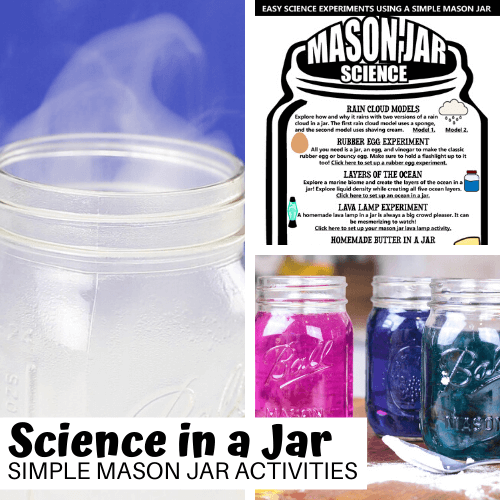

IMAGES
VIDEO
COMMENTS
15 Density Science Experiments. By Amy Cowen on March 13, 2024 8:00 AM. Use these free science lessons, experiments, and activities to teach K-12 students about density. Sometimes students wrongly think that an object's density is the same as its weight or its mass. Instead, density refers to an object's mass in a given volume.
Science Concepts. Density; Mass; Volume; Sinking; Floating; More Awesome Science Experiments for Kids. Don't forget we have 100s more fun and exciting science experiments for kids on Science Sparks.. Some of my favourites are our Fairy Tale Activities, where you can make a raft for the Billy Goats and a Zip Line for Jack and the Beanstalk.The infamous coke and mento explosion is always great ...
Find out here. {Source} Does Clay Float or Sink - This is a great experiment that show that it's not just an objects density that impacts if it will sink of float. The shape of the object plays an important role as well. Bottle Diver Science Experiment - Learn how density is used to make this scuba diver move up and down in the bottle.
3. Seven-Layer Density Column Experiment. Explore the fascinating world of density with the captivating "Seven-Layer Density Column Experiment.". In this experiment, students will have the opportunity to create a mesmerizing column of liquids, each layer resting on top of the other based on its density. 4.
In this easy lab, students will learn that the density of water is always 1 g/mL. All they have to do is continue filling up a graduated cylinder by adding 10mL at a time, measure the mass, and calculate the density. No matter the volume of the water, it will always end up with a density of 1 g/mL. A lab worksheet can be found in this bundle on ...
Step 1 - Add one drop of red food coloring and one drop of blue food coloring to 1/4 cup of honey and stir until combined. This creates a purple color liquid. Pour the purple liquid carefully into the tall jar. Step 2 - Next add about 1/4 cup of blue dish soap to the tall jar. Step 3 - Add a few drops of green food coloring to 1/4 cup of ...
This simple experiment can help children grasp the concept of density by observing real-life examples and understanding the relationship between mass, volume, and density. Materials needed for the density experiment. A piece of cork. A piece of wood. A piece of metal (such as a small metal bolt or nut) A container of water. Optional: a scale to ...
Density refers to the amount of stuff there is in a given space. Different things have different densities. For example, a cup of water has more stuff in it than a cup of oil. The water is denser. A marble and a ball of the exact same size are made of different amounts of stuff - they have different densities.
This is the volume - the amount of space that food took up. If the fruit or vegetable floats, push it down with the tip of a pencil until water spills out and over into the pan. Measure the water in milliliters. Now it's time to calculate the density of your produce. For each piece of food, divide the fruit or vegetable's weight in grams by ...
Fill two beakers with 150 mL (2/3 cup) of water. Put several drops of blue food coloring in one beaker, and several drops of red in the second. Add a handful of ice to the blue water and put it in the refrigerator for a few minutes. Put the red beaker in the microwave for a minute.
Kids love this classic science experiment that illustrates density. Plus, it involves food! A 70s trend has made a comeback as part of a 5th grade science fair project to introduce children to acids and bases. Bacterial Colonies. Bacterial colonies are collections of microorganisms that come together to form one mass. Scientists use them on ...
In this simple science experiment, we take just a few minutes to test the laws of density and discover just how easy it is to make an egg float! ... Density is a measure of the mass per unit volume of a substance. Simply said, how much "stuff" in a given volume. Water has a density of 1 g/mL (g/cm3). Objects will float in water if their ...
The average density of water is calculated as 1 gram per milliliter (1 g/ml) or 1g/cm 3. Several factors affect the density of water, whether it's freshwater or tap water, salt water, and the temperature of the water. Water is densest at 3.98°C and least dense at 0°C (freezing point). Adding things to water changes its density because those ...
2. The Floating Orange. Here is a simple science experiment that teaches an important lesson about density. Grab 2 oranges, peel one and leave the skin on the other. Fill 2 glasses with water and put each orange in a cup. Watch your kid's eyes get huge as they see the peeled orange sink and the unpeeled orange float!
Prep Work. Gather all your materials at a workspace that can tolerate accidental spills of the liquids. Fill a cup with tap water and add a couple of drops of food coloring to the water. Ask an adult to help you cut and prepare small pieces (about 0.5 × 0.5 cm) of the rubber band, the Styrofoam, and the wax.
Rainbow in a Jar. Get ready for a WOW spring science experiment for kids of all ages! This Rainbow in a jar experiment is a great way to teach density for kids in a meaningful and memorable way!Use this rainbow activities for preschoolers, toddler, kindergartners, grade 1, grade 2, grade 3, grade 4, grade 5, and grade 6 students.Just grab a couple simple kitchen items, a jar, and get ready to ...
Air is Stuff: Air Pressure Experiment with Water. This activity is a good place to start. When you try to pour water into the jug, it won't go in. This is a concrete way to show that air is stuff. This always surprises and puzzles kids and encourages them to play.
Boil a pot of hot water and fill a large pitcher with ice water. Fill three jars all the way to the top with ice water. Fill three more jars up to the top with hot water (but don't make it so hot that you can't touch the sides of the jar). Dye one cold jar yellow, one blue, and one red. Repeat for the hot jars.
50 Fantastic 5th Grade Science Projects, Experiments, and Activities. For the classroom or science fair. There's something so fascinating about hands-on science experiments and projects. They make learning so meaningful and so much fun! These 5th grade science projects help kids explore biology, physics, chemistry, and a whole lot more. Try ...
If you want to see cool science experiments that are easy to do and learn about density, then you've come to the right place. Density is defined as mass per ...
For older kids (3rd to 5th grade), you can add science vocabulary surrounding the explored concept, such as surface tension, reaction rates, density, and solubility. Each of the experiments below will further explain the science behind the experiment.